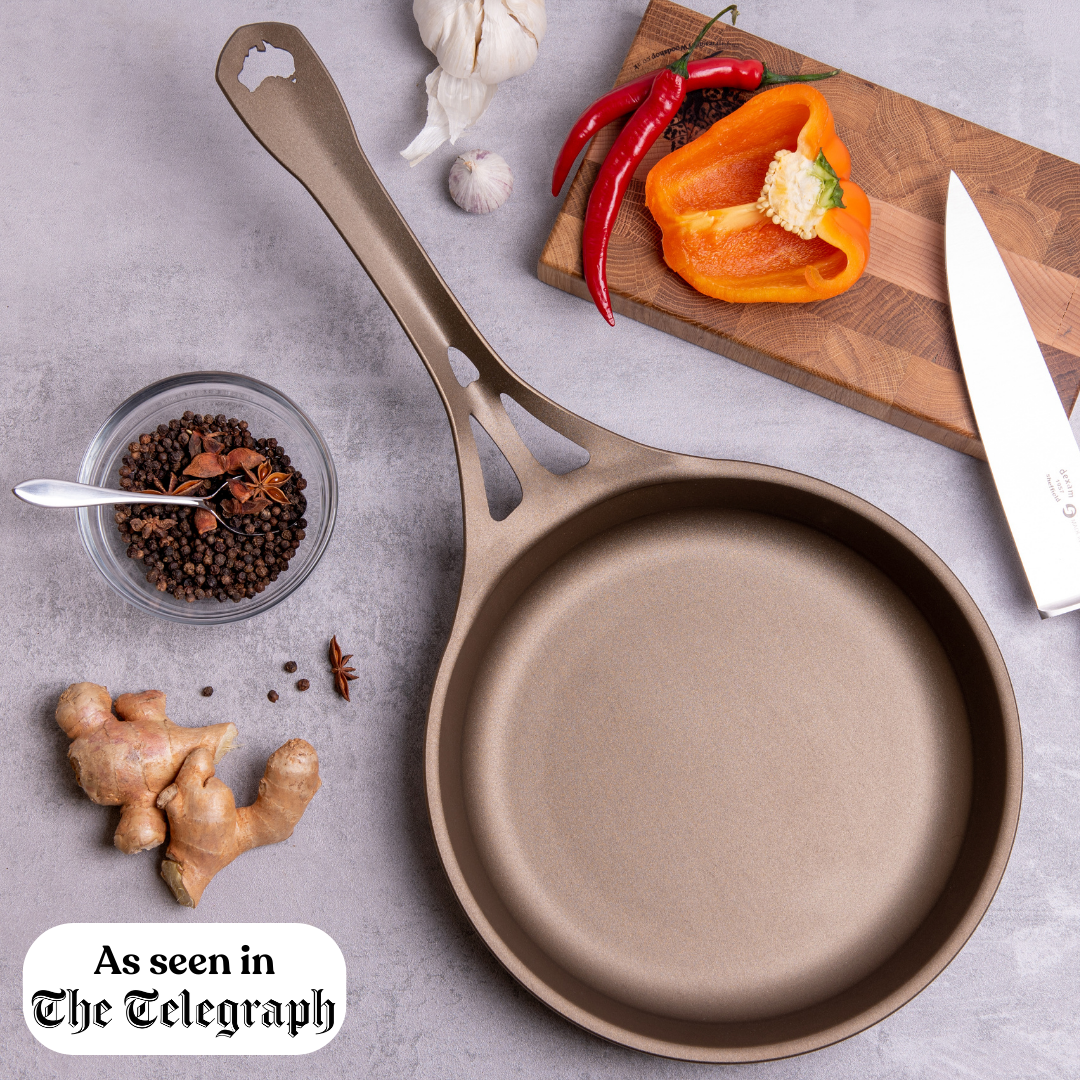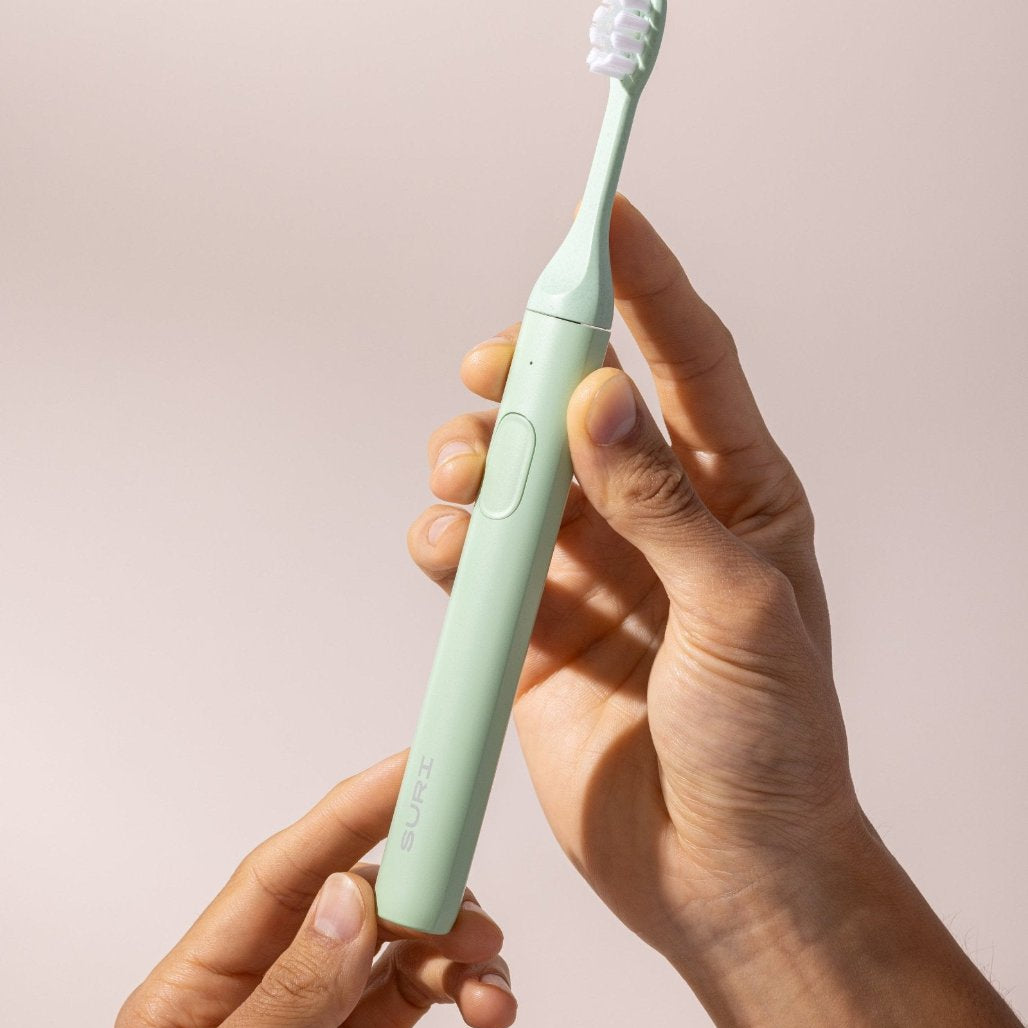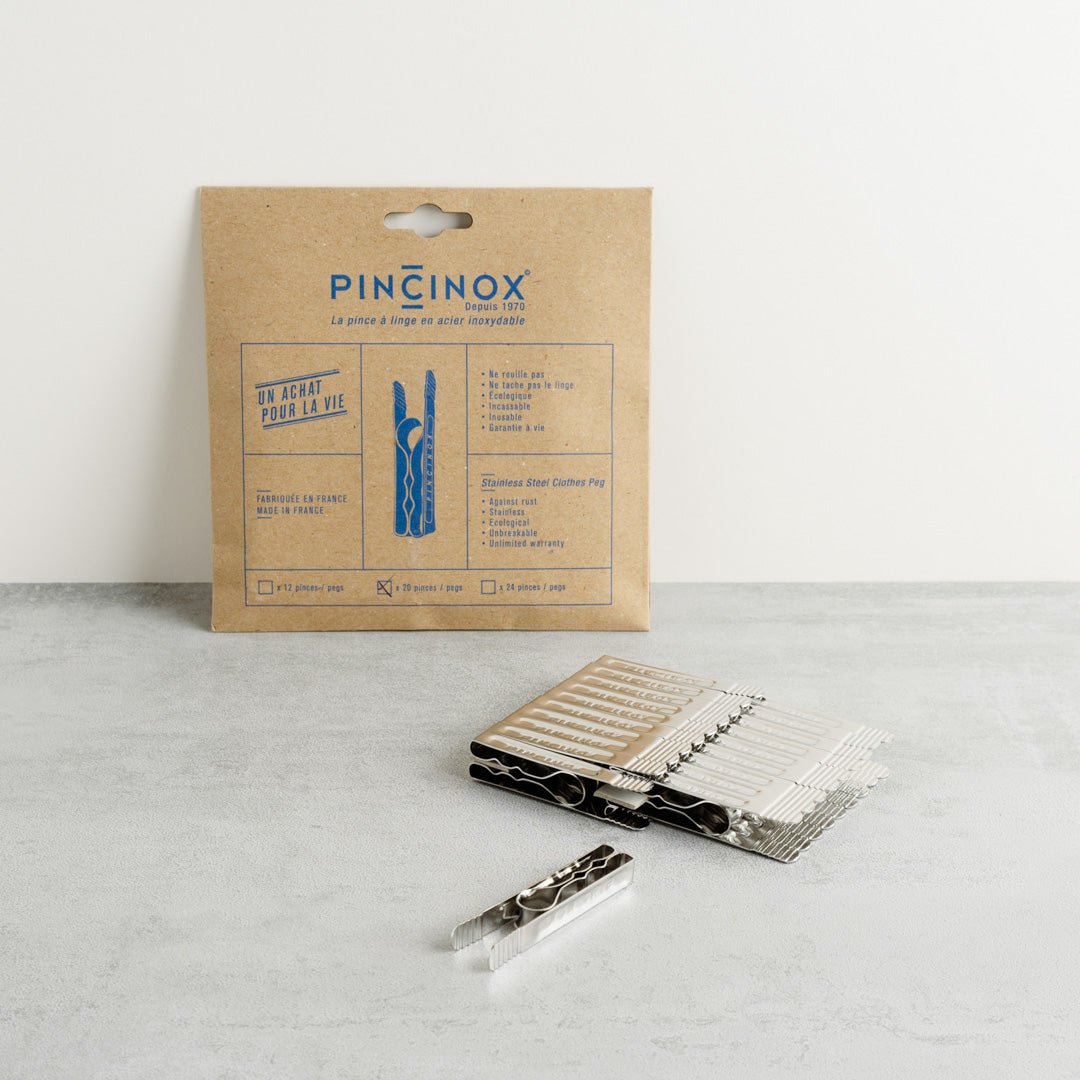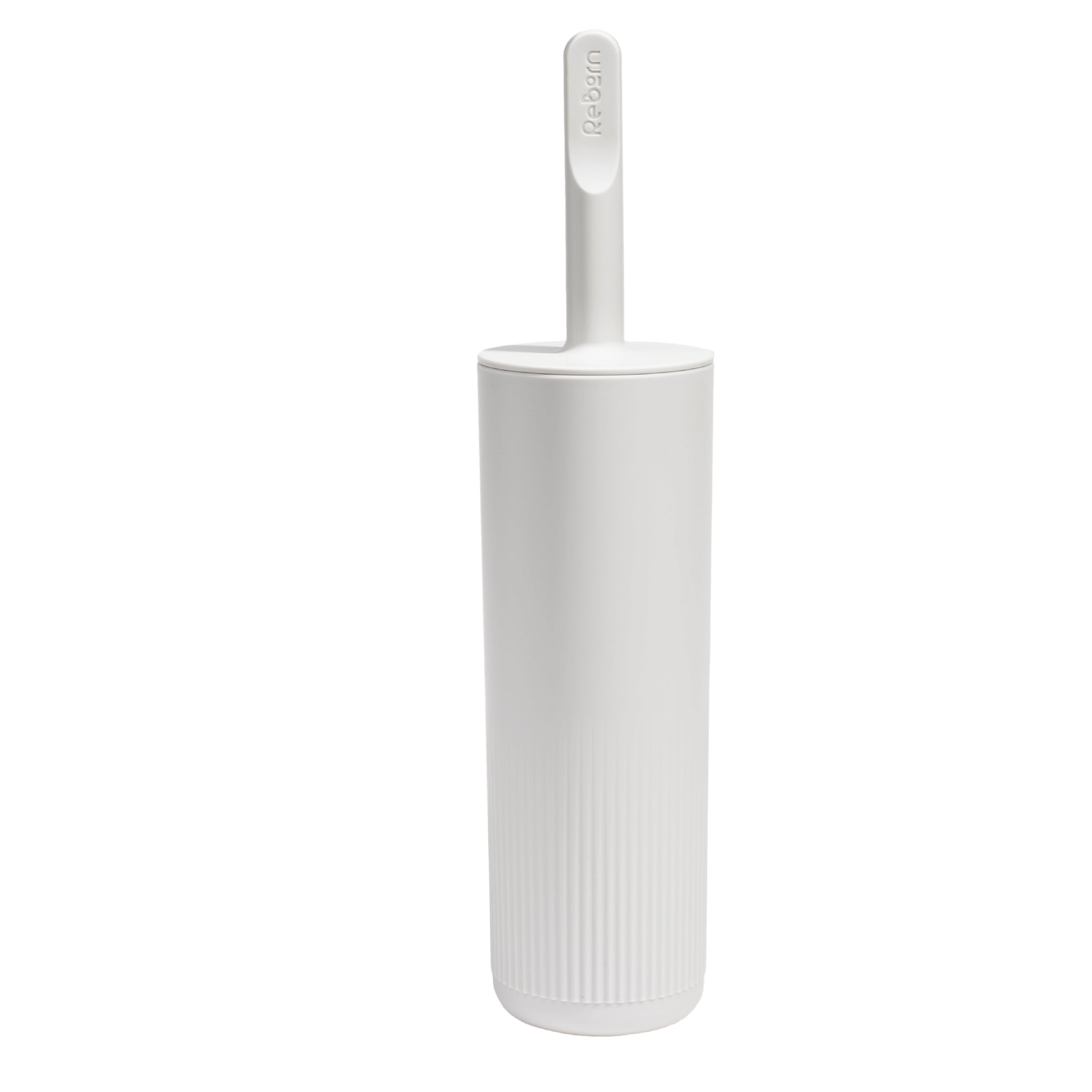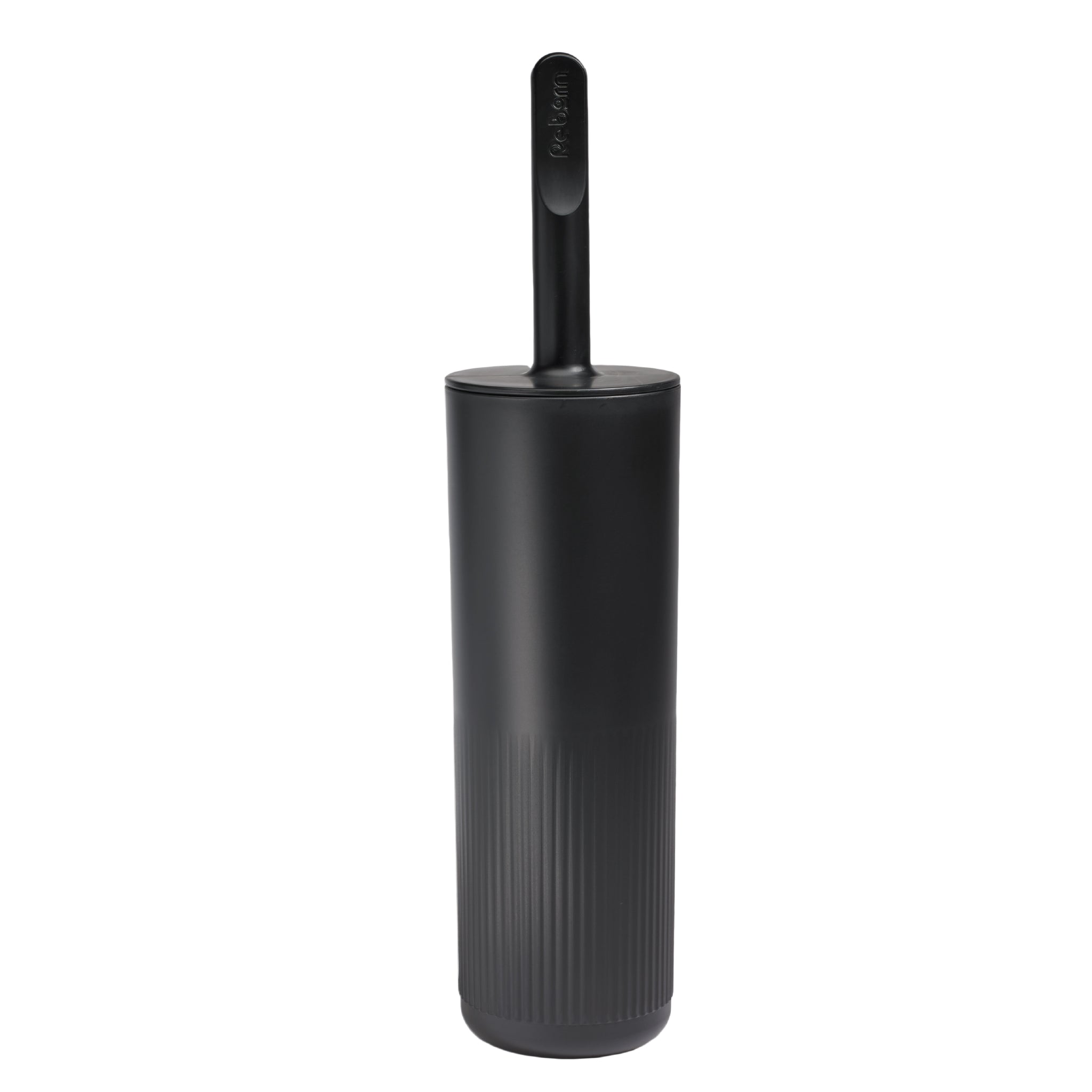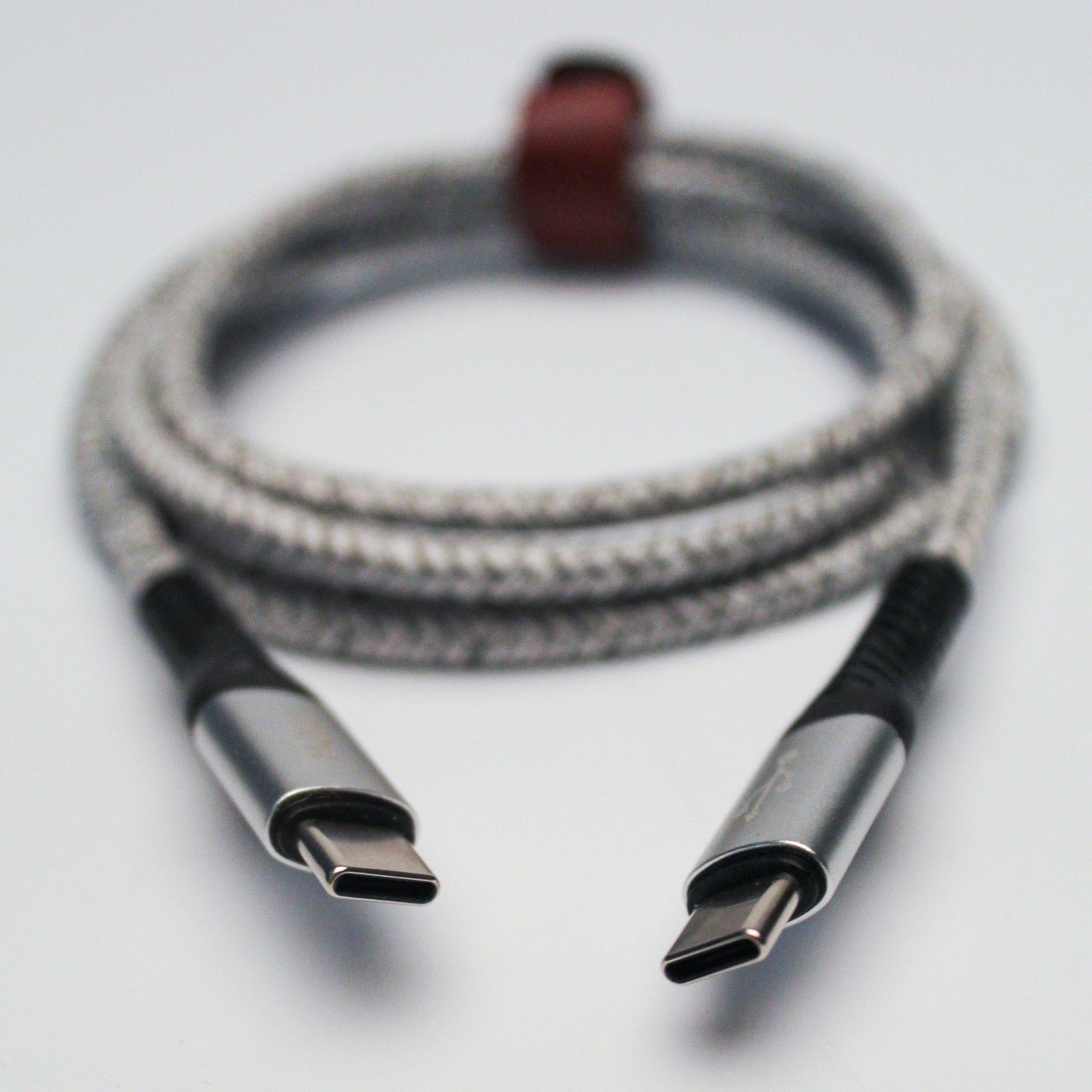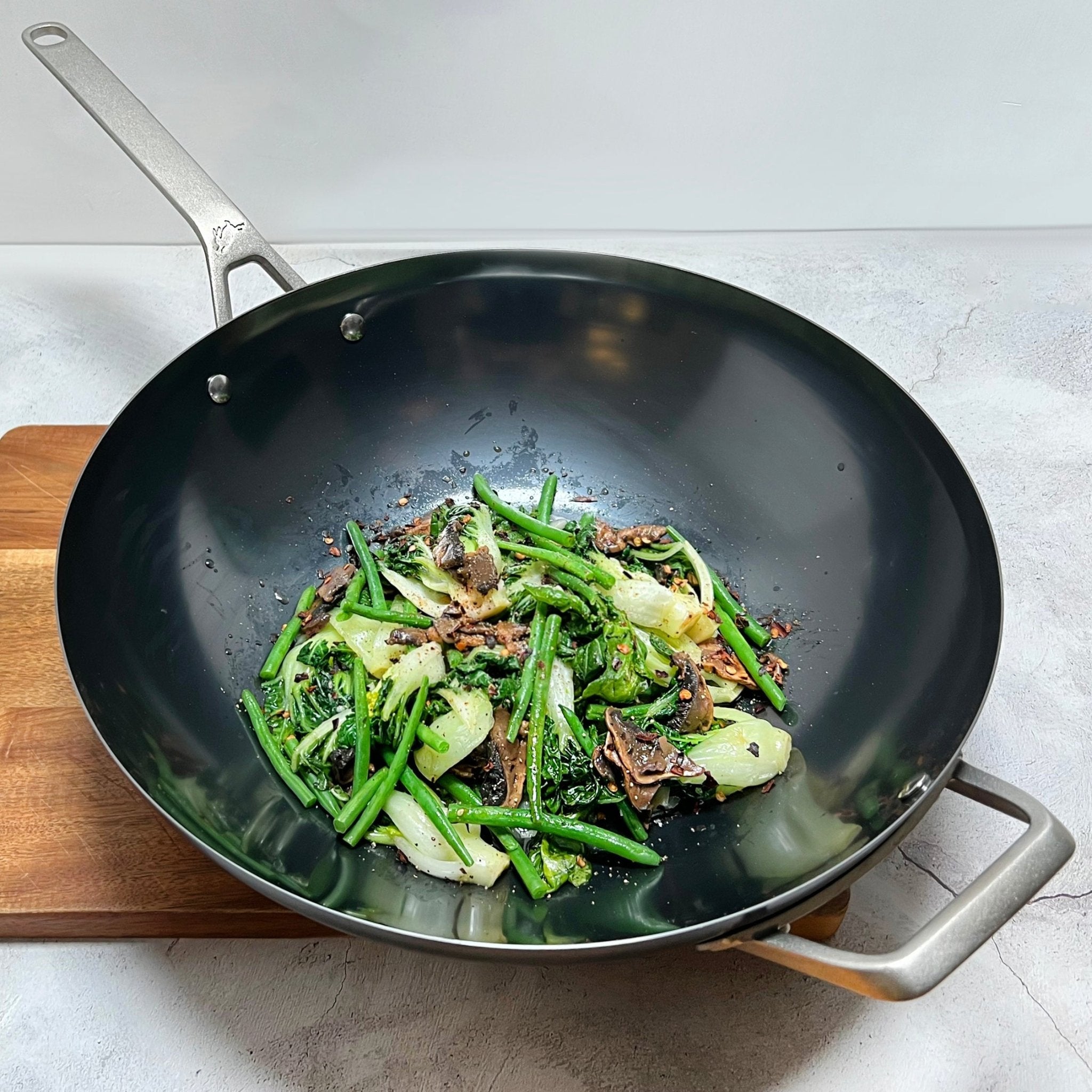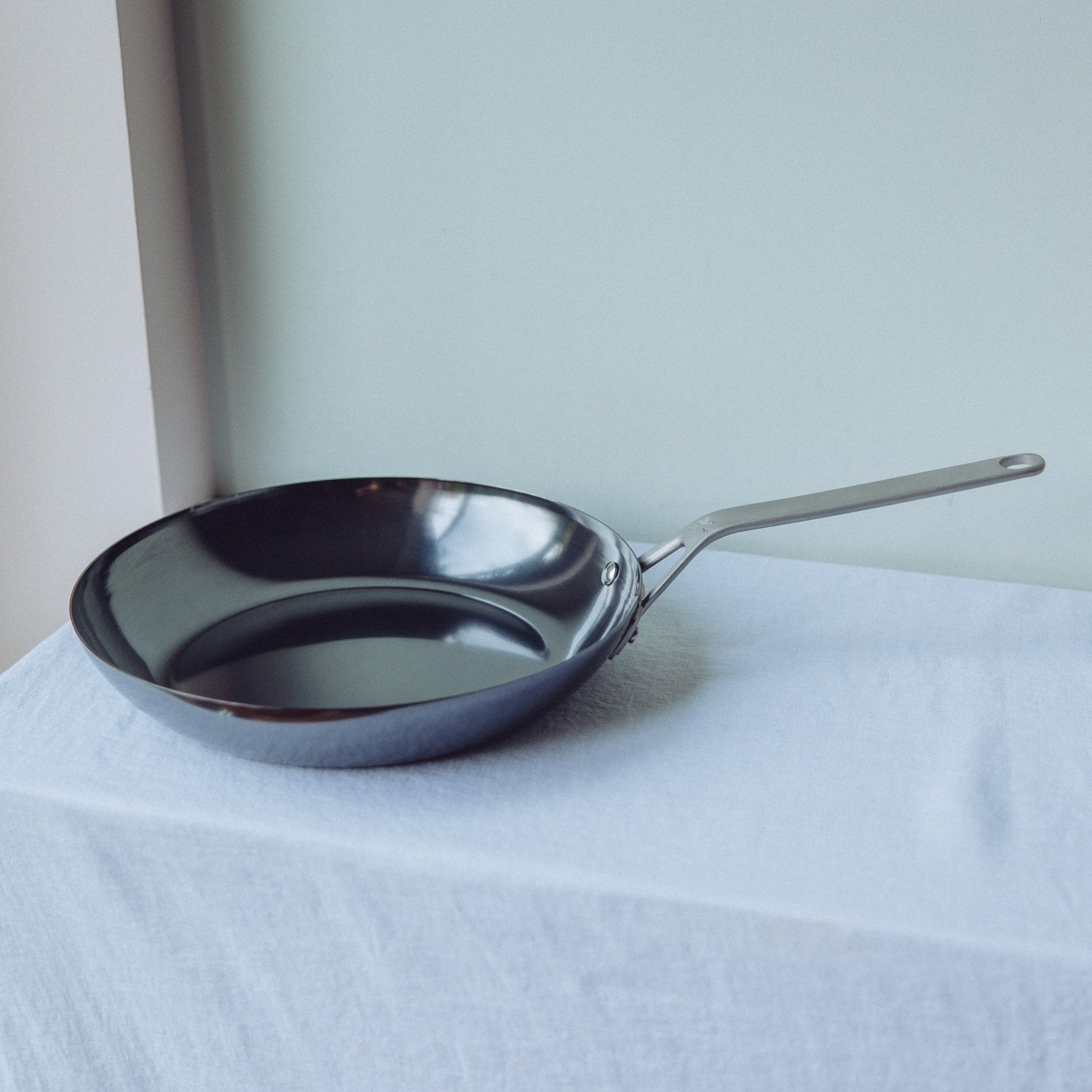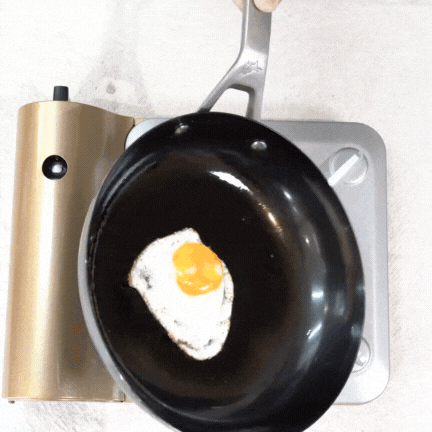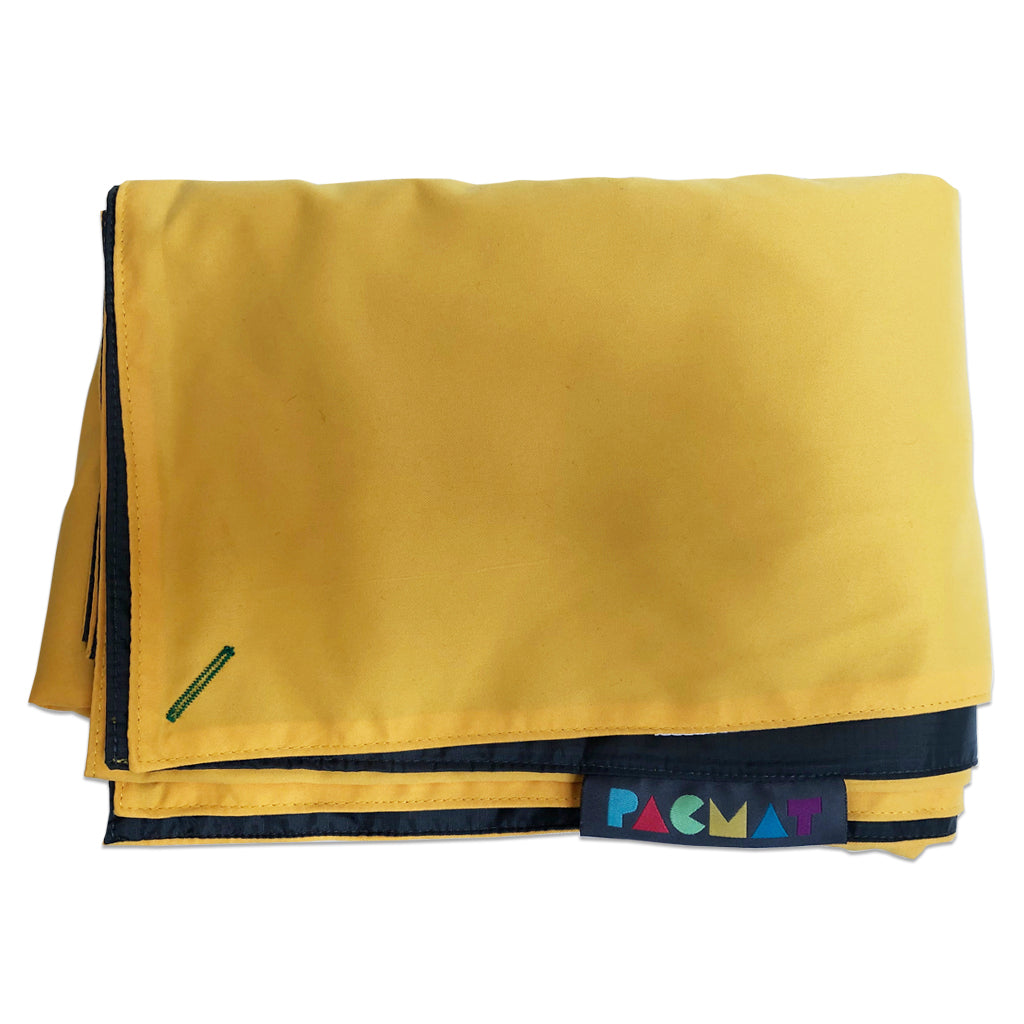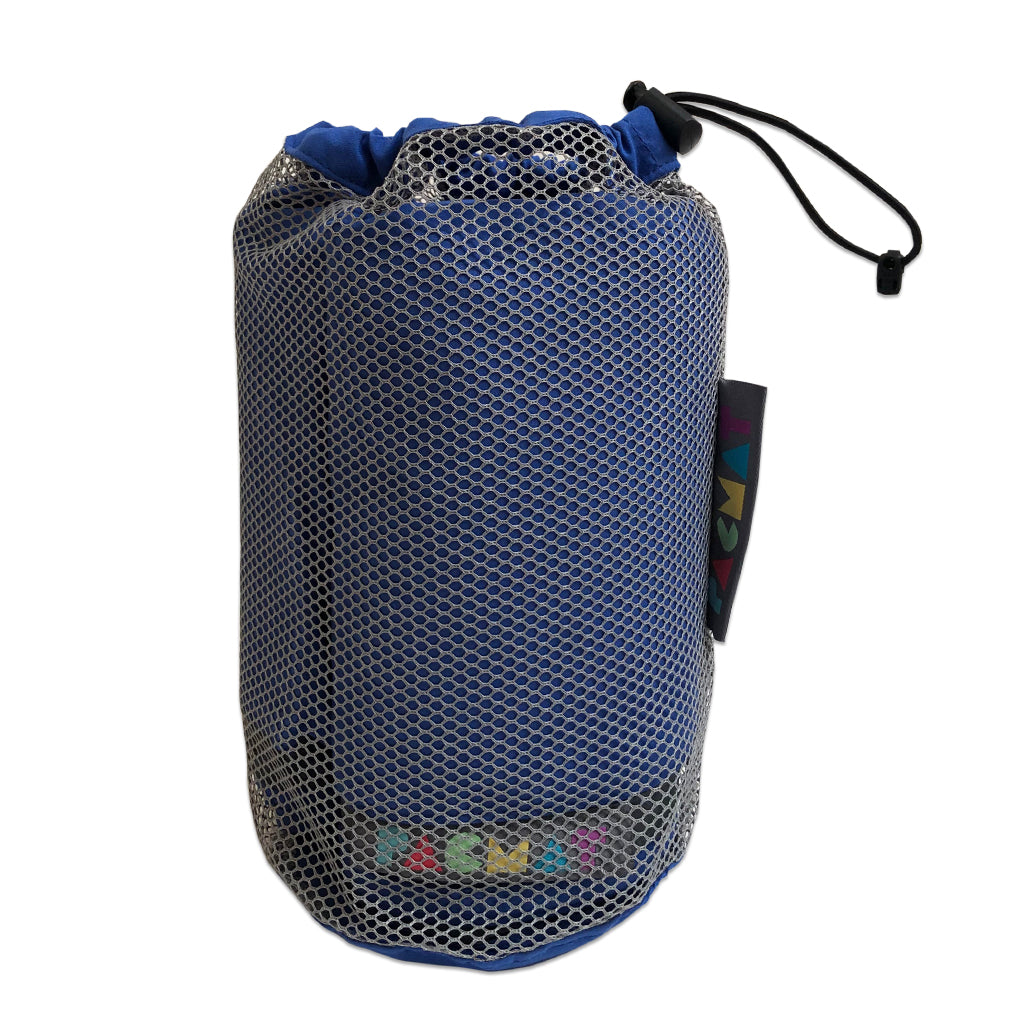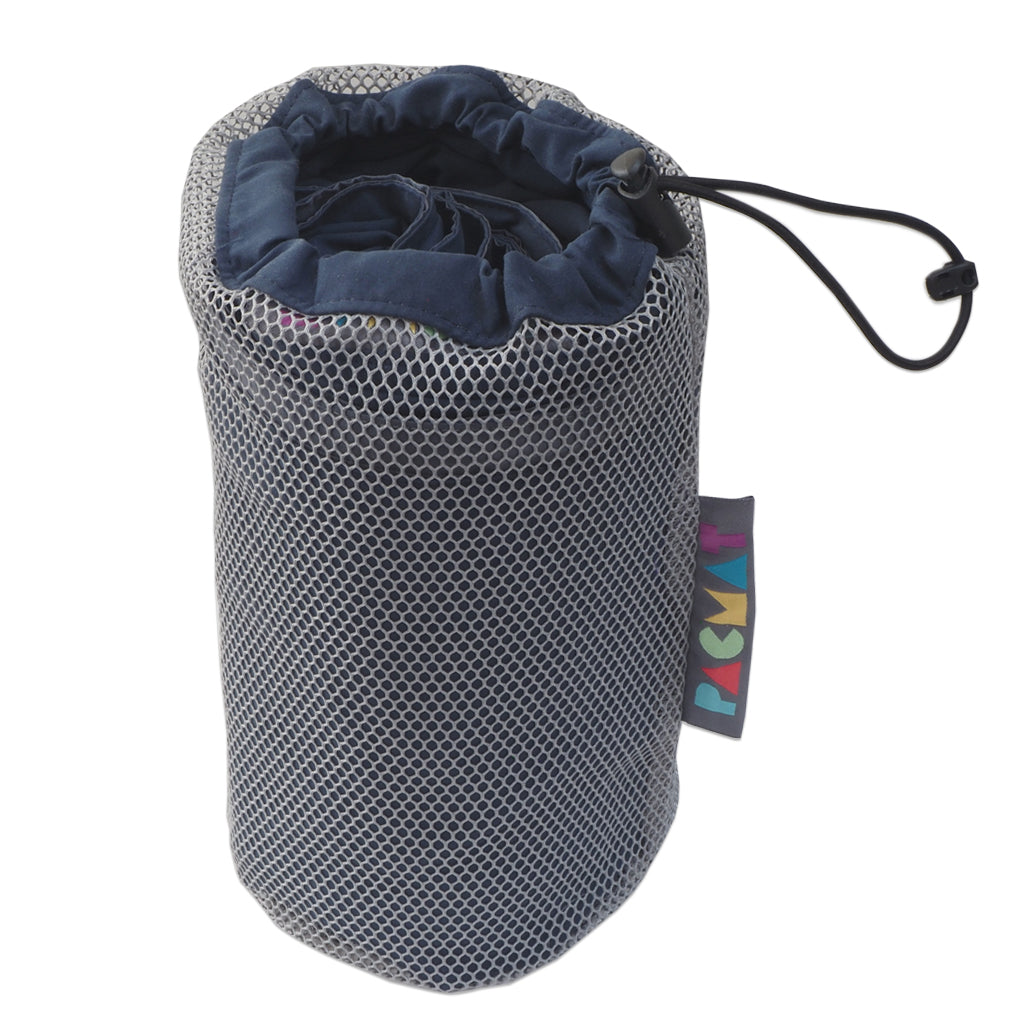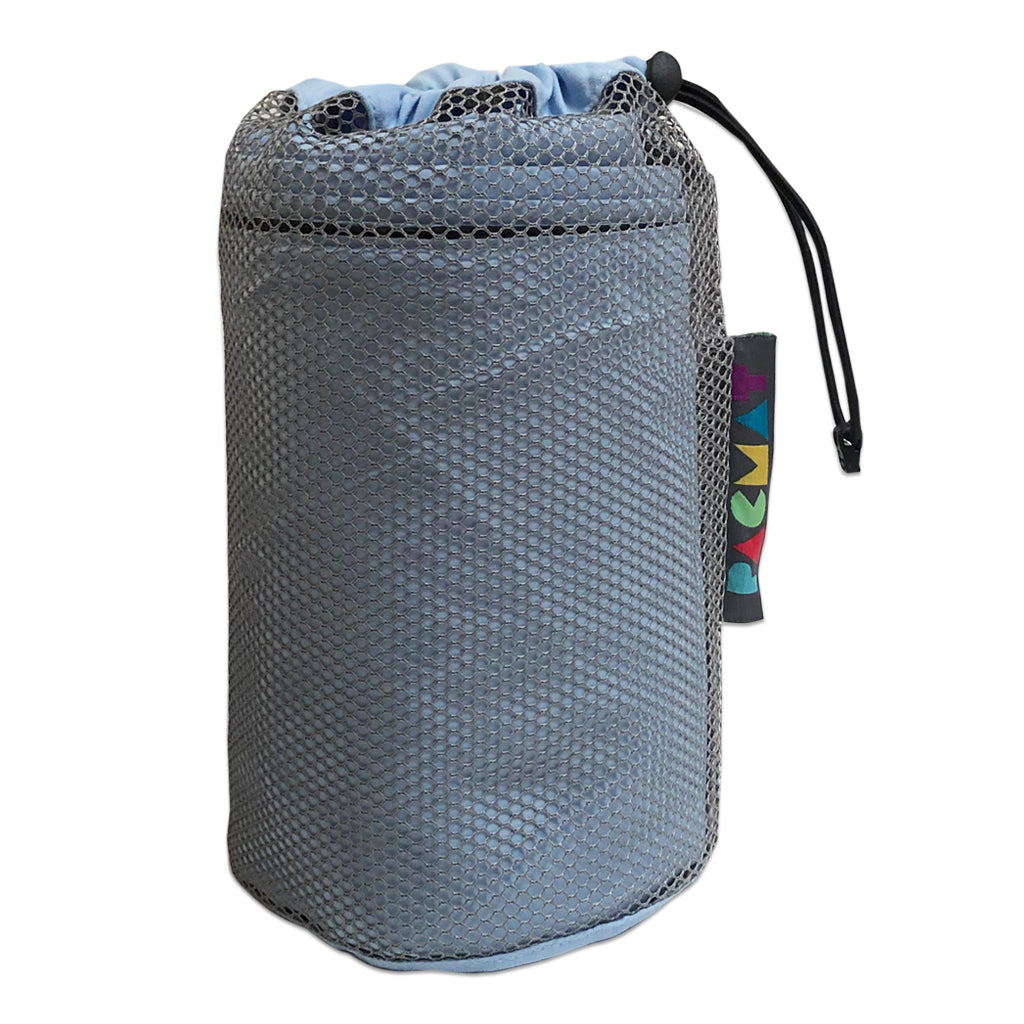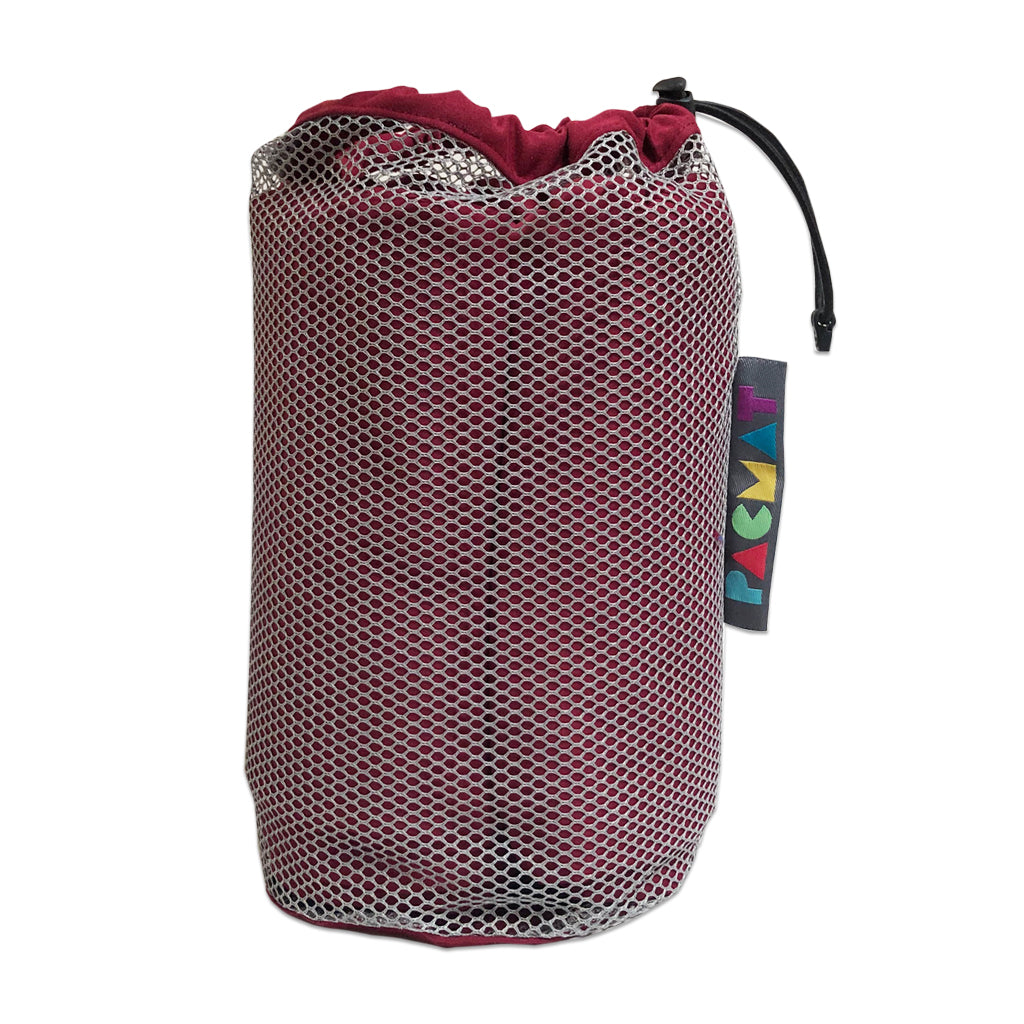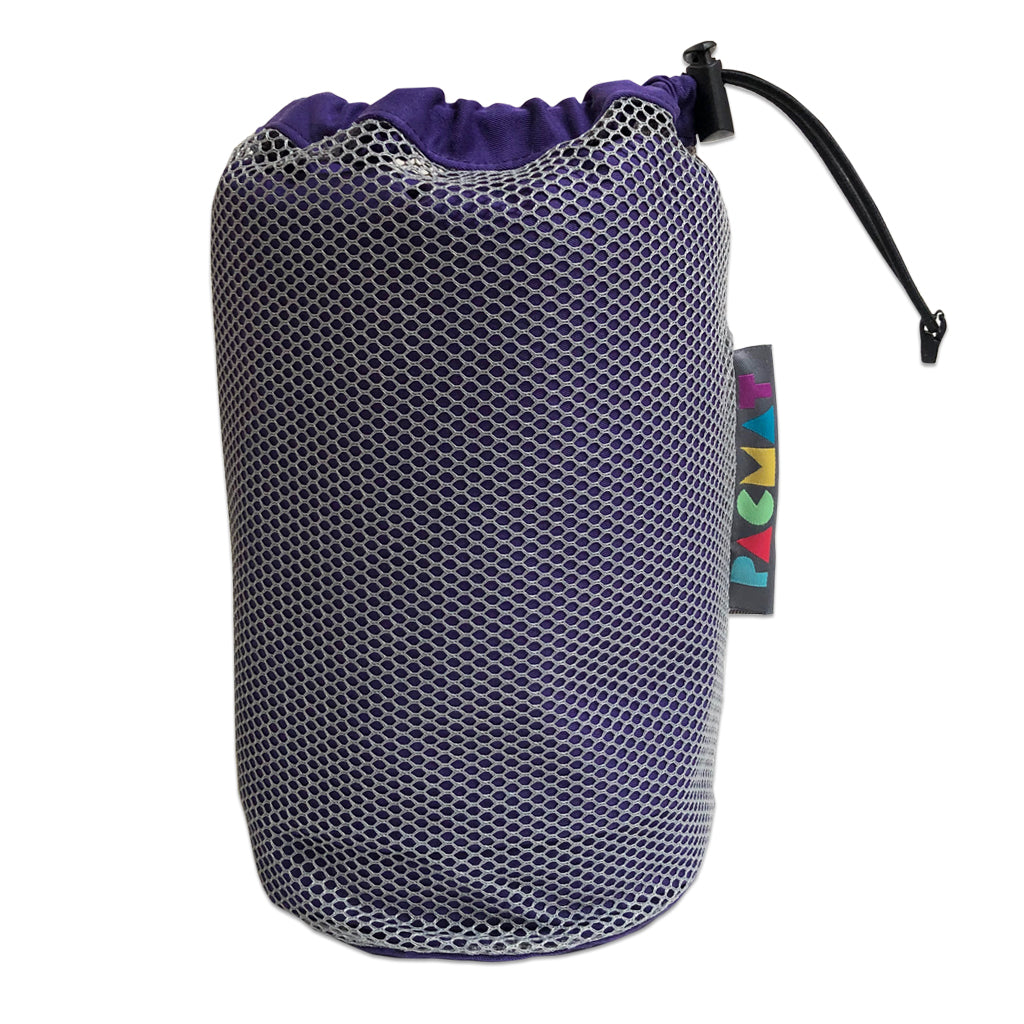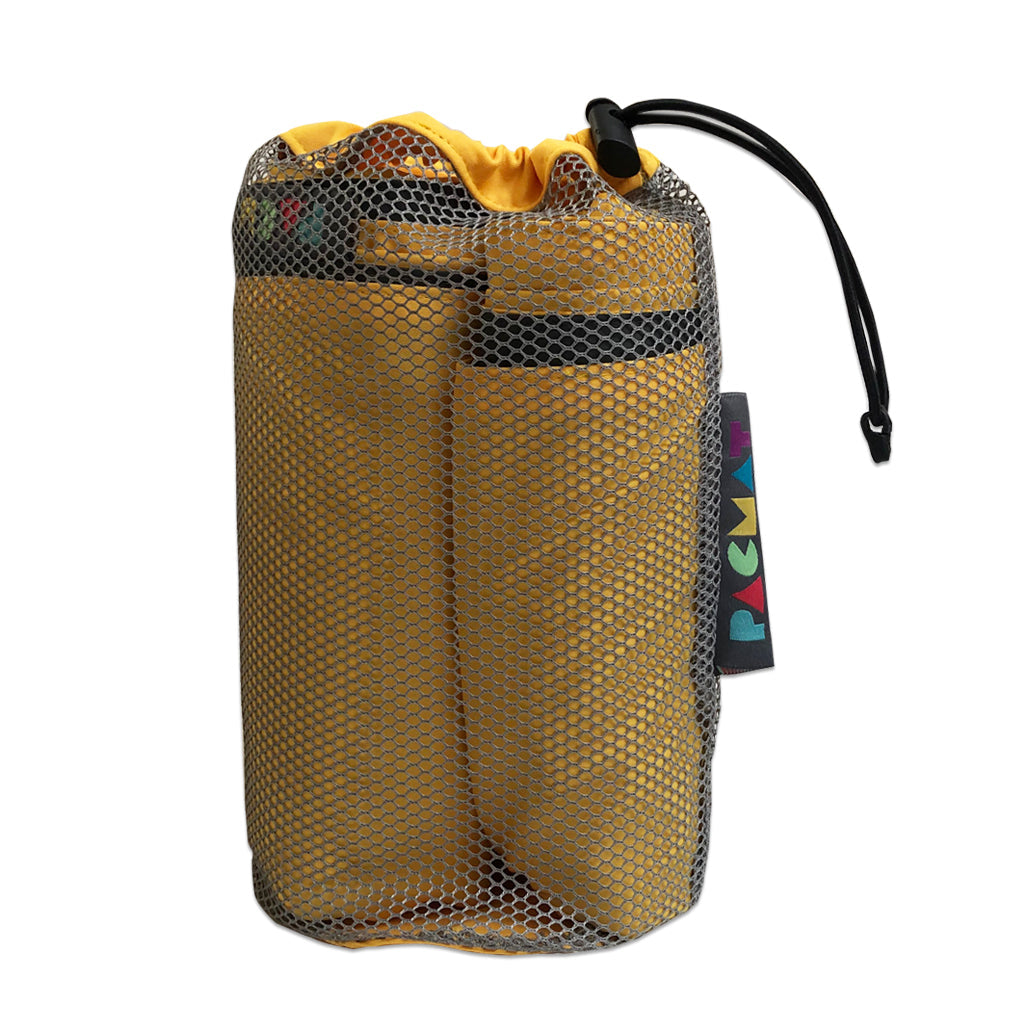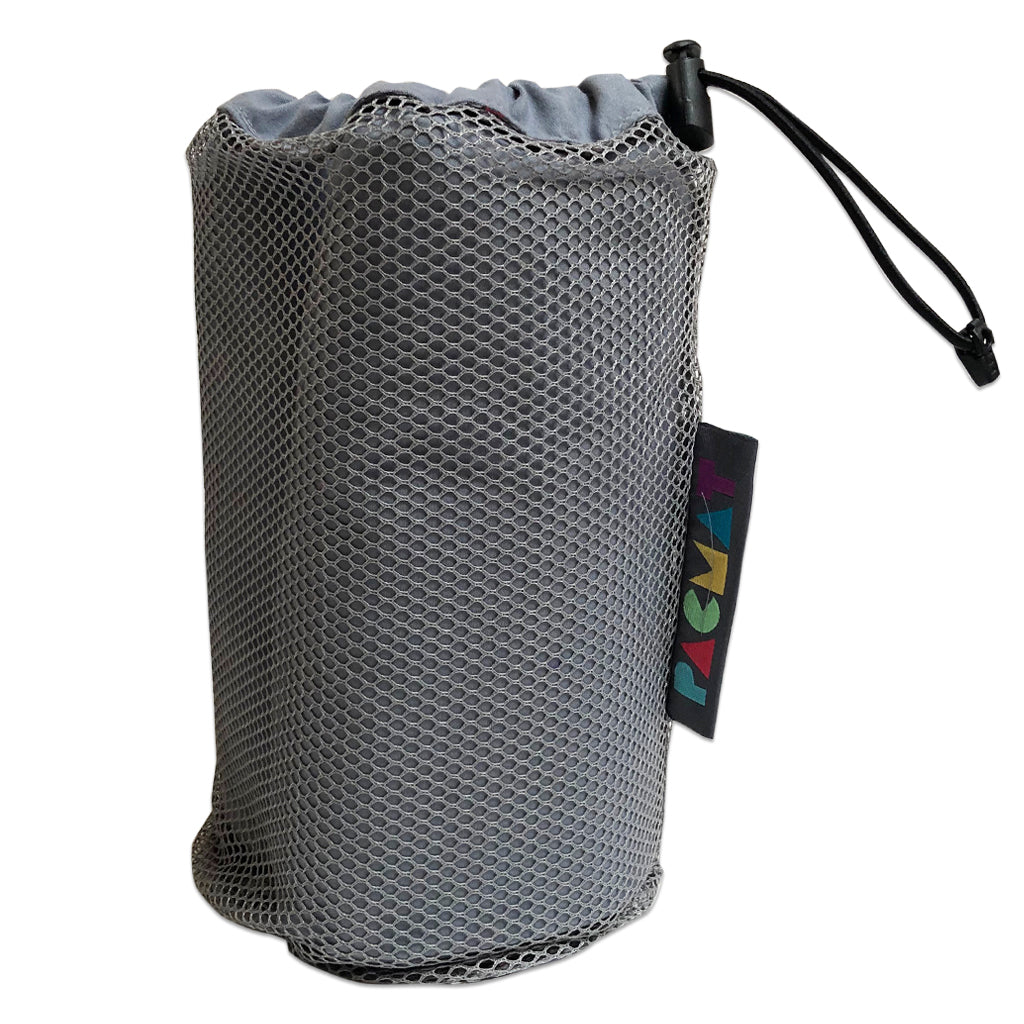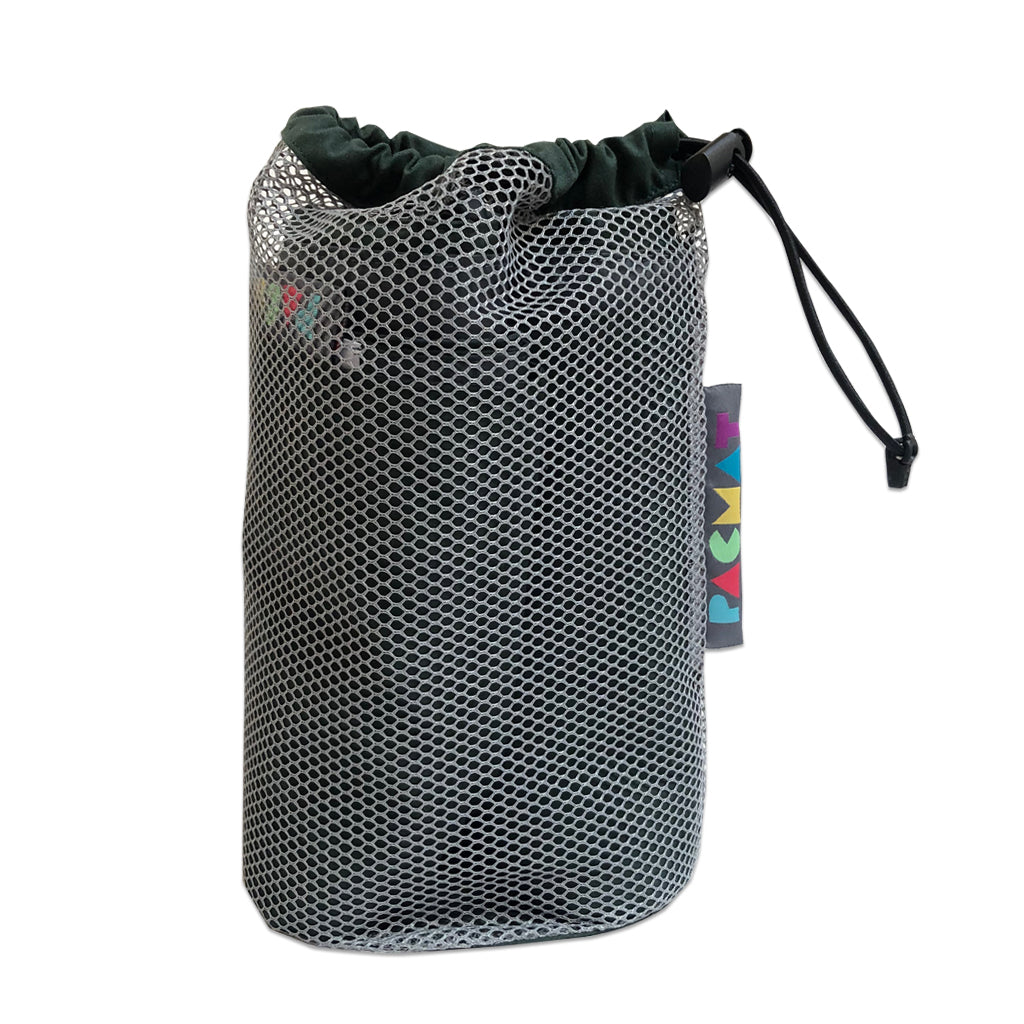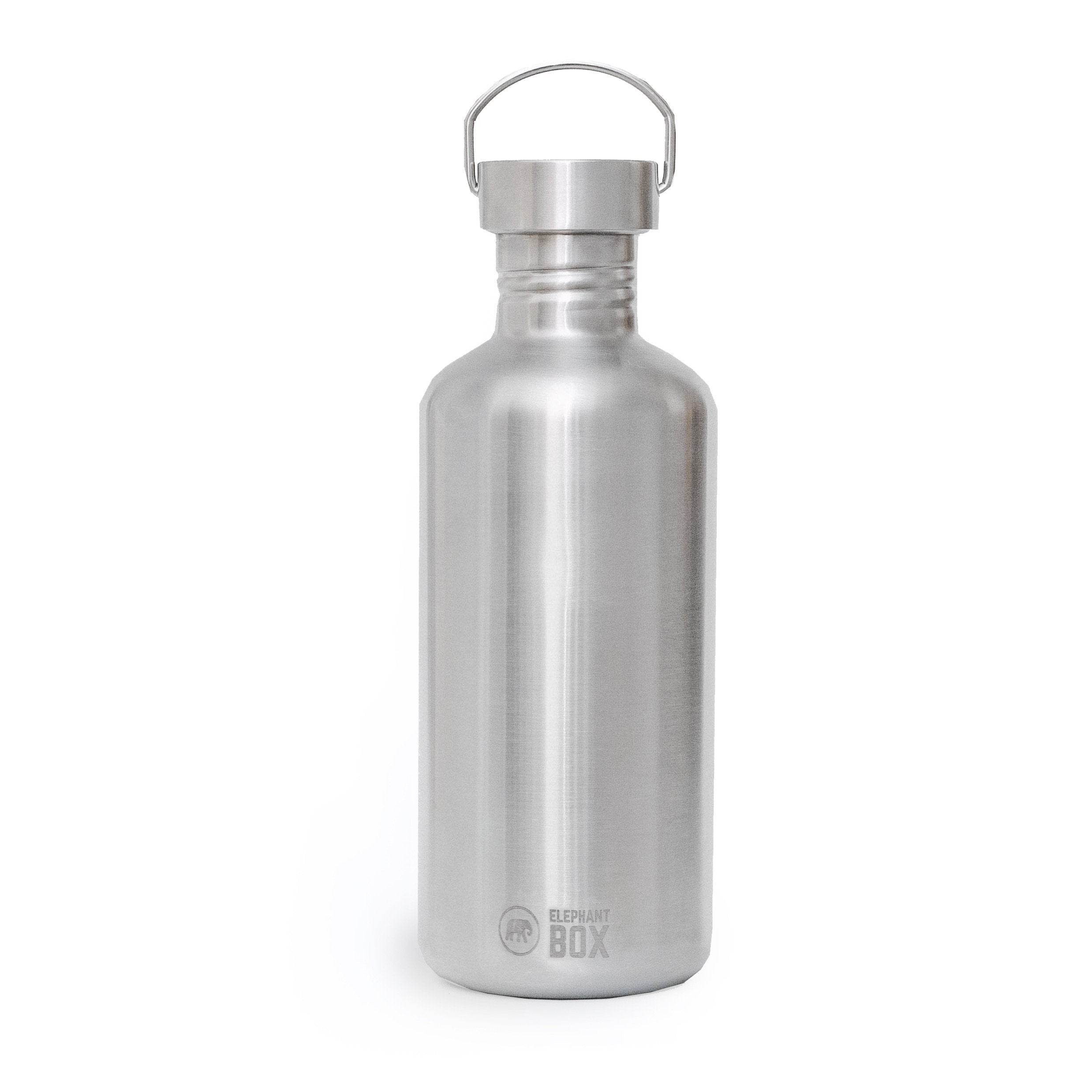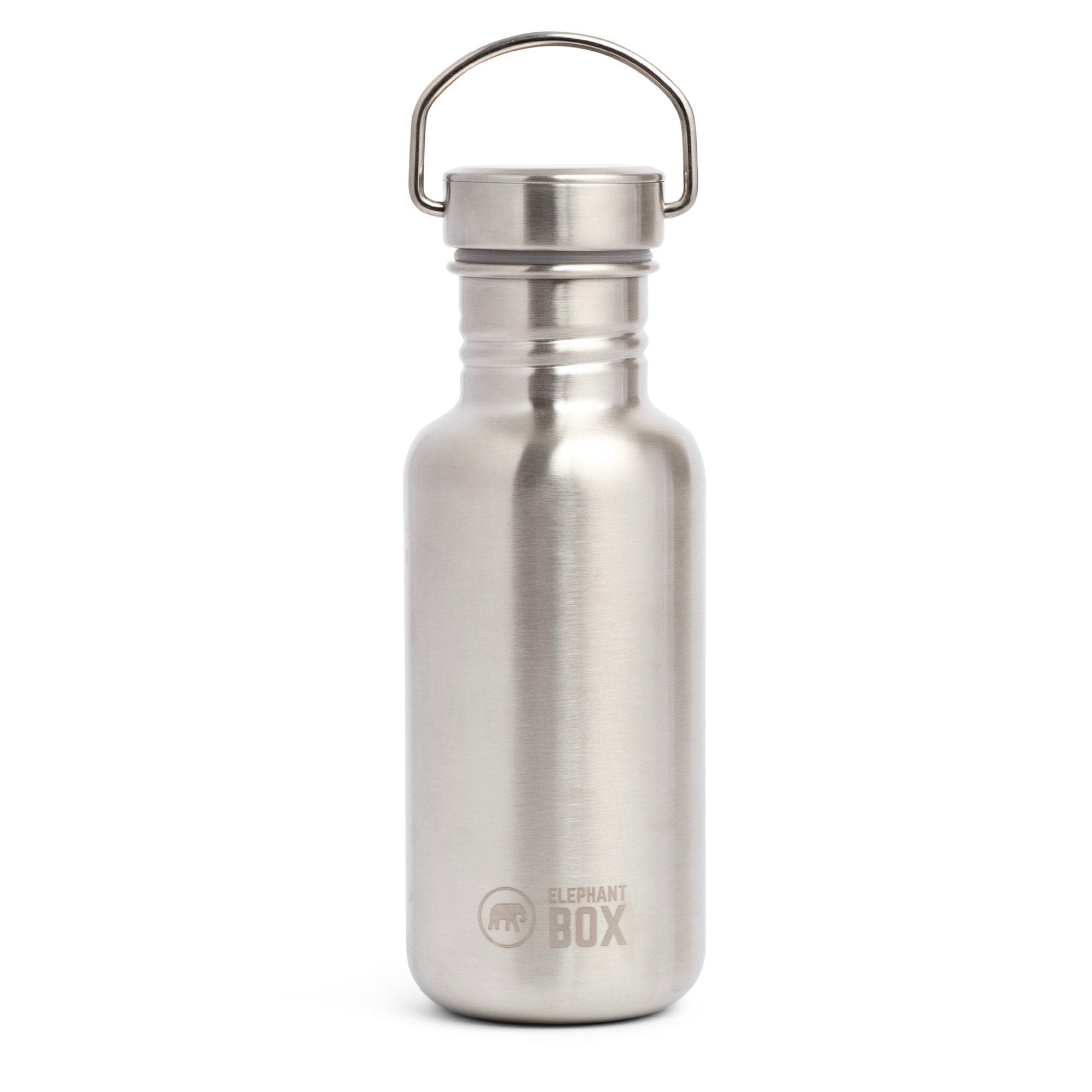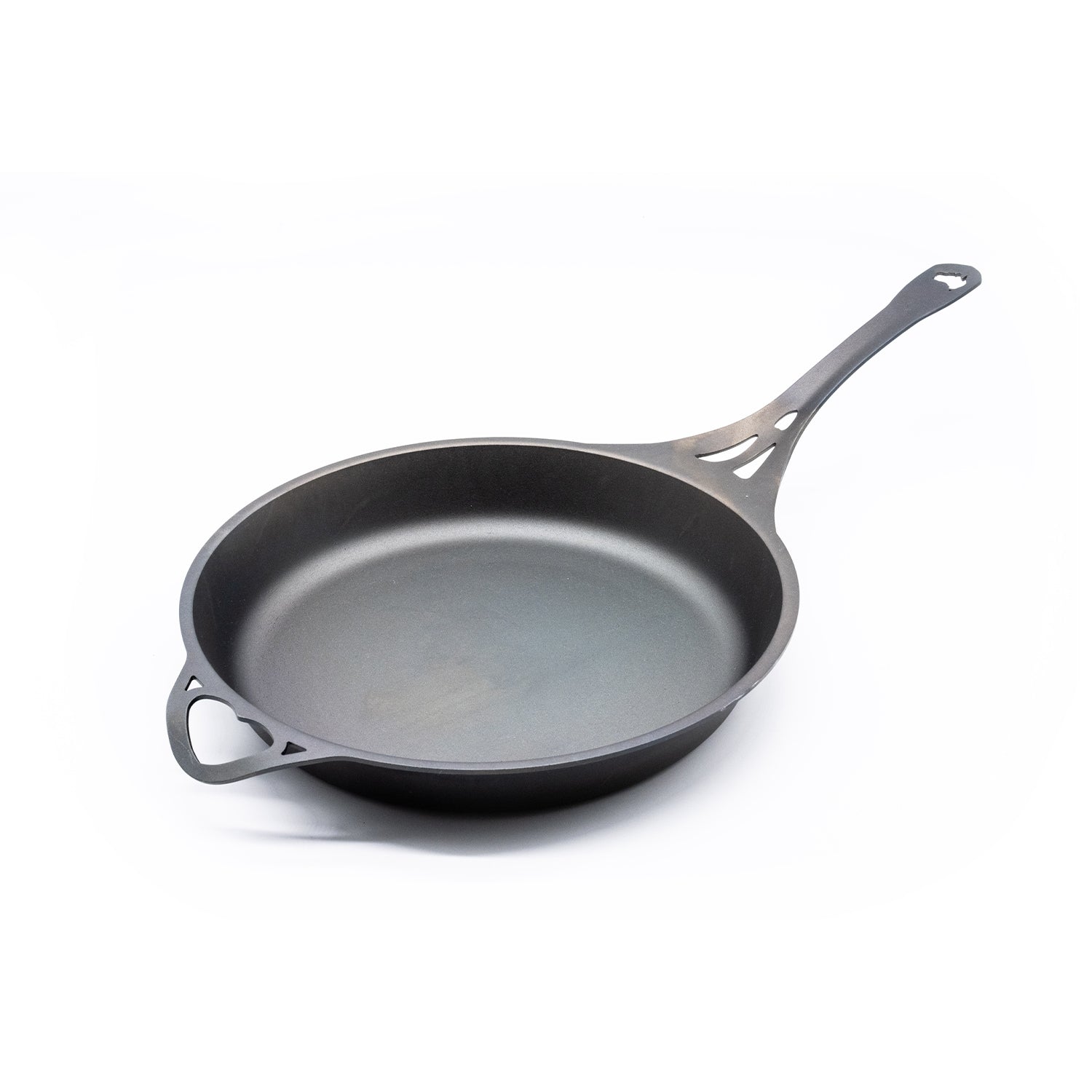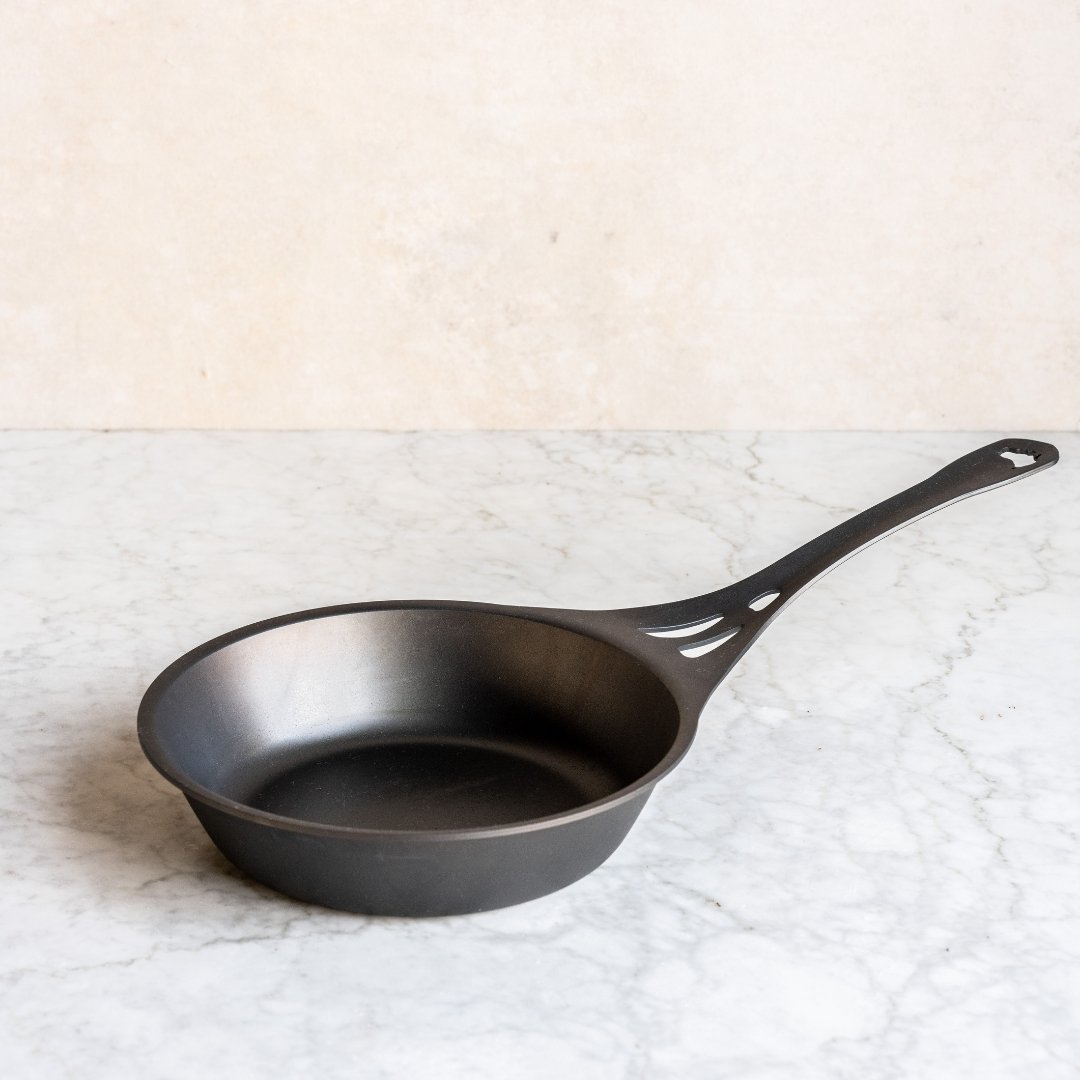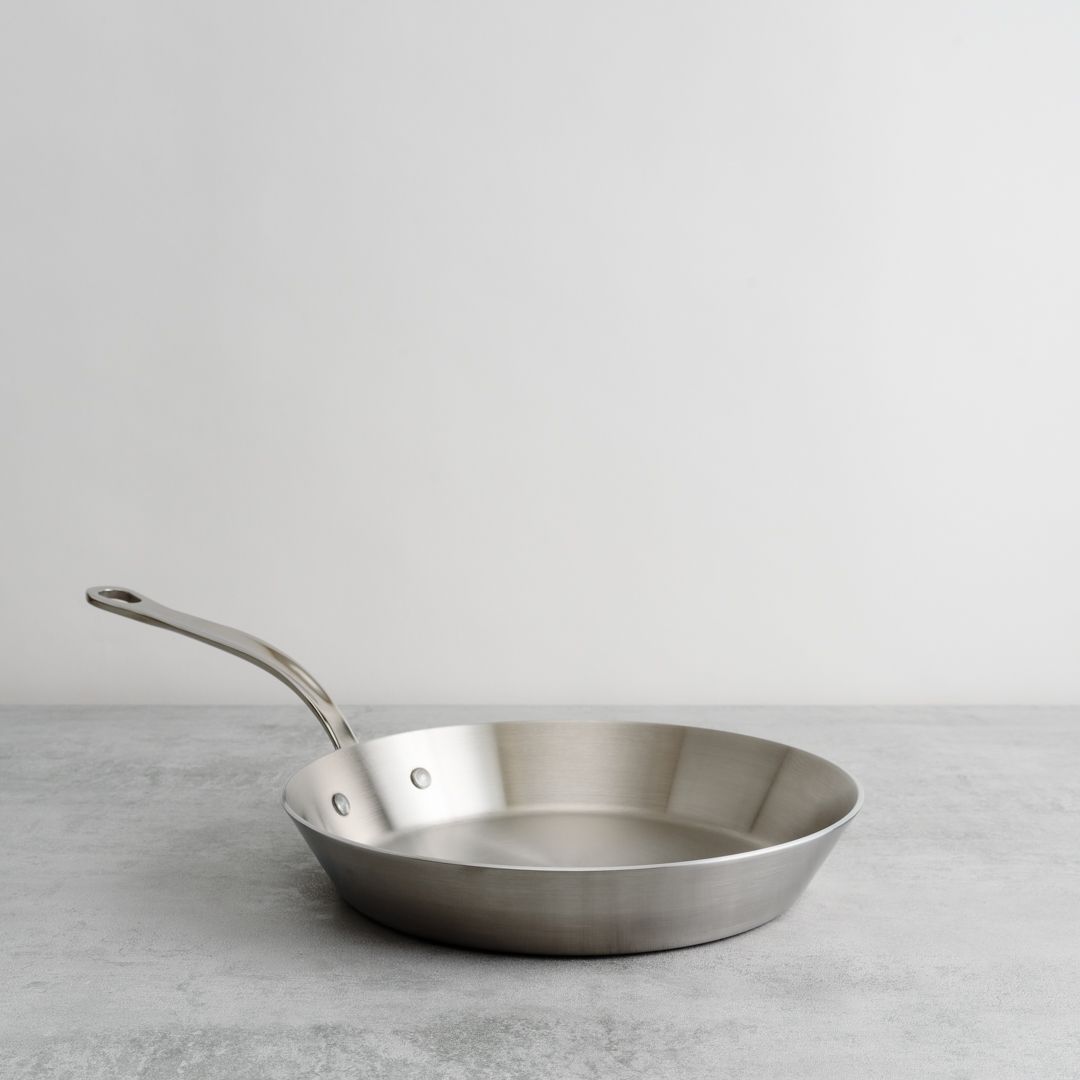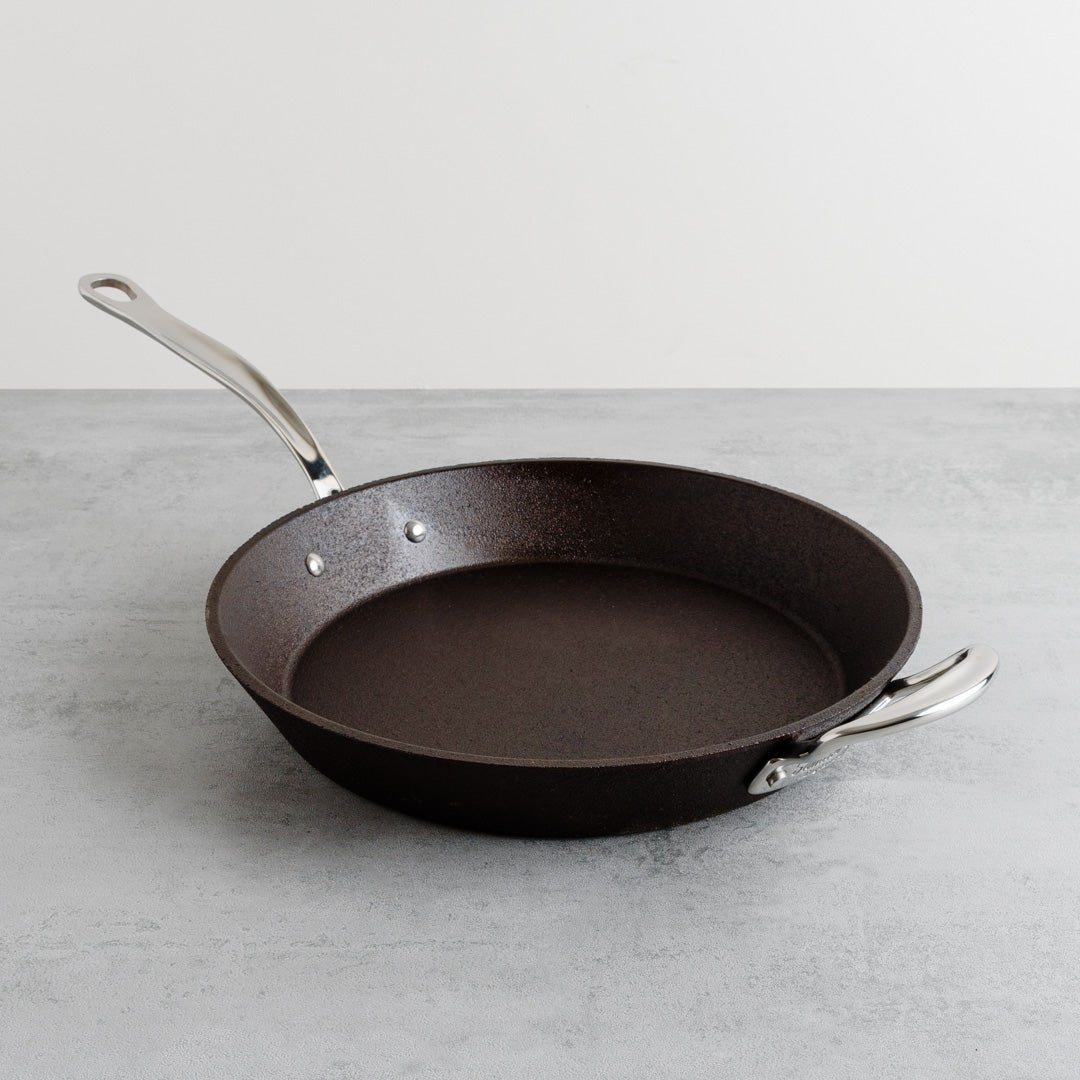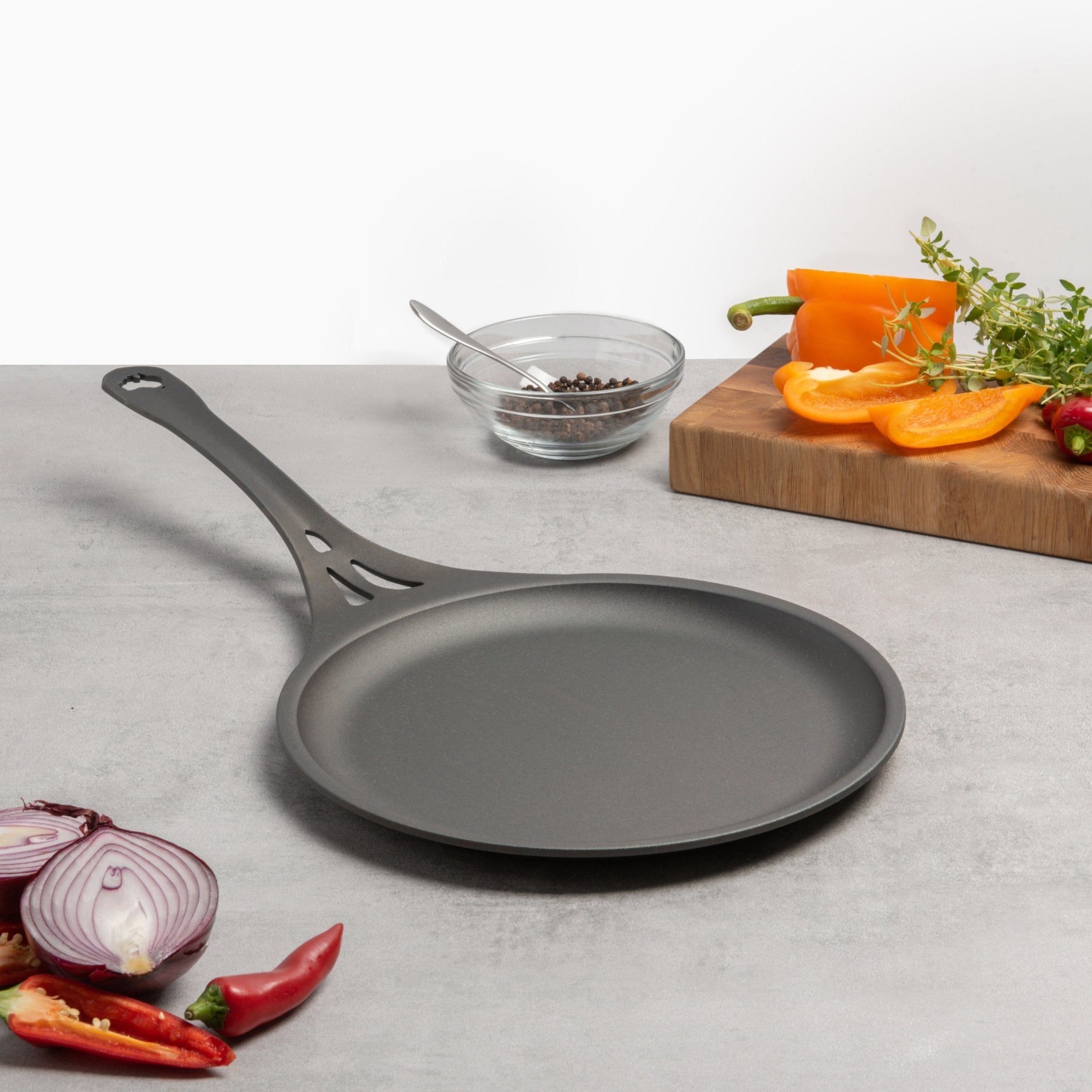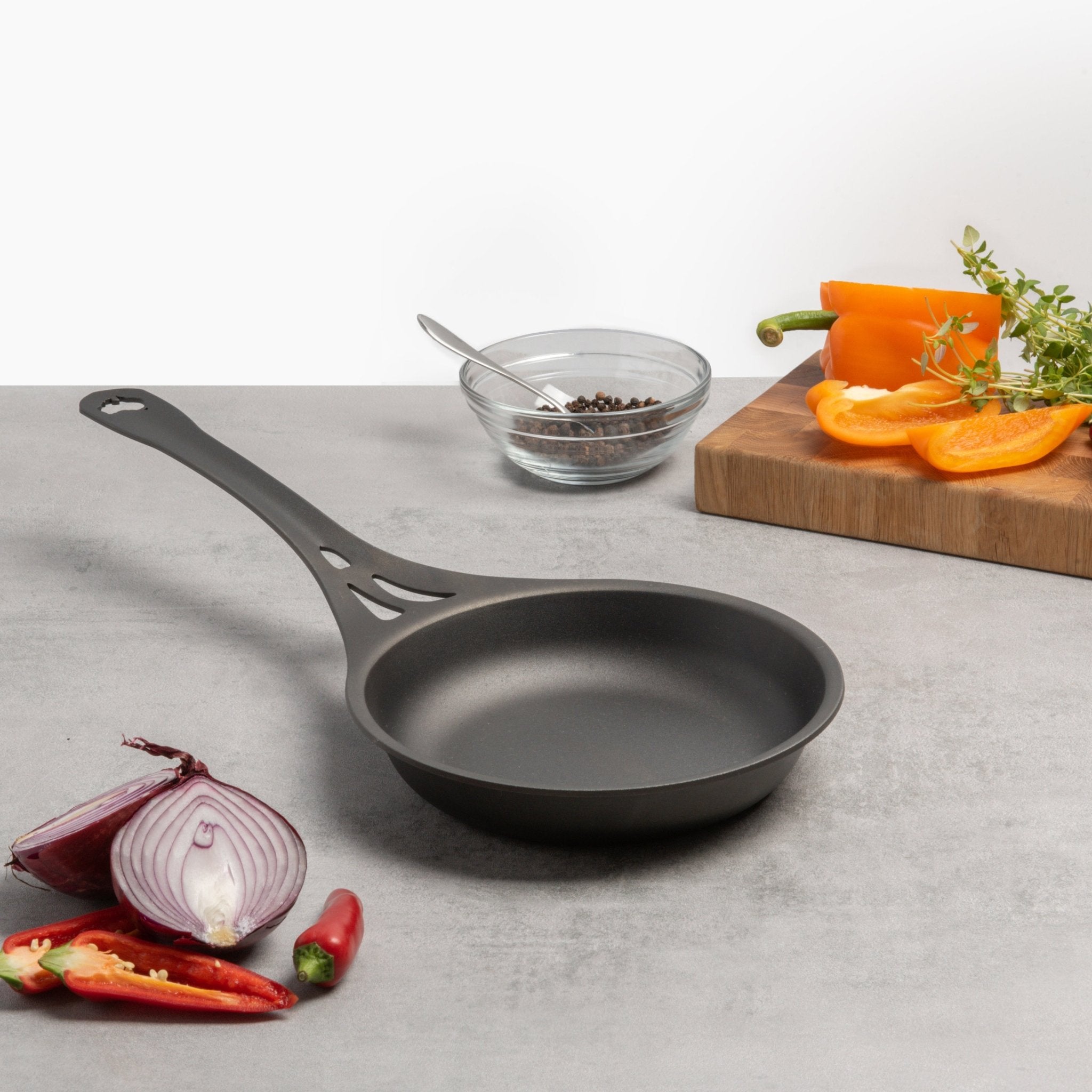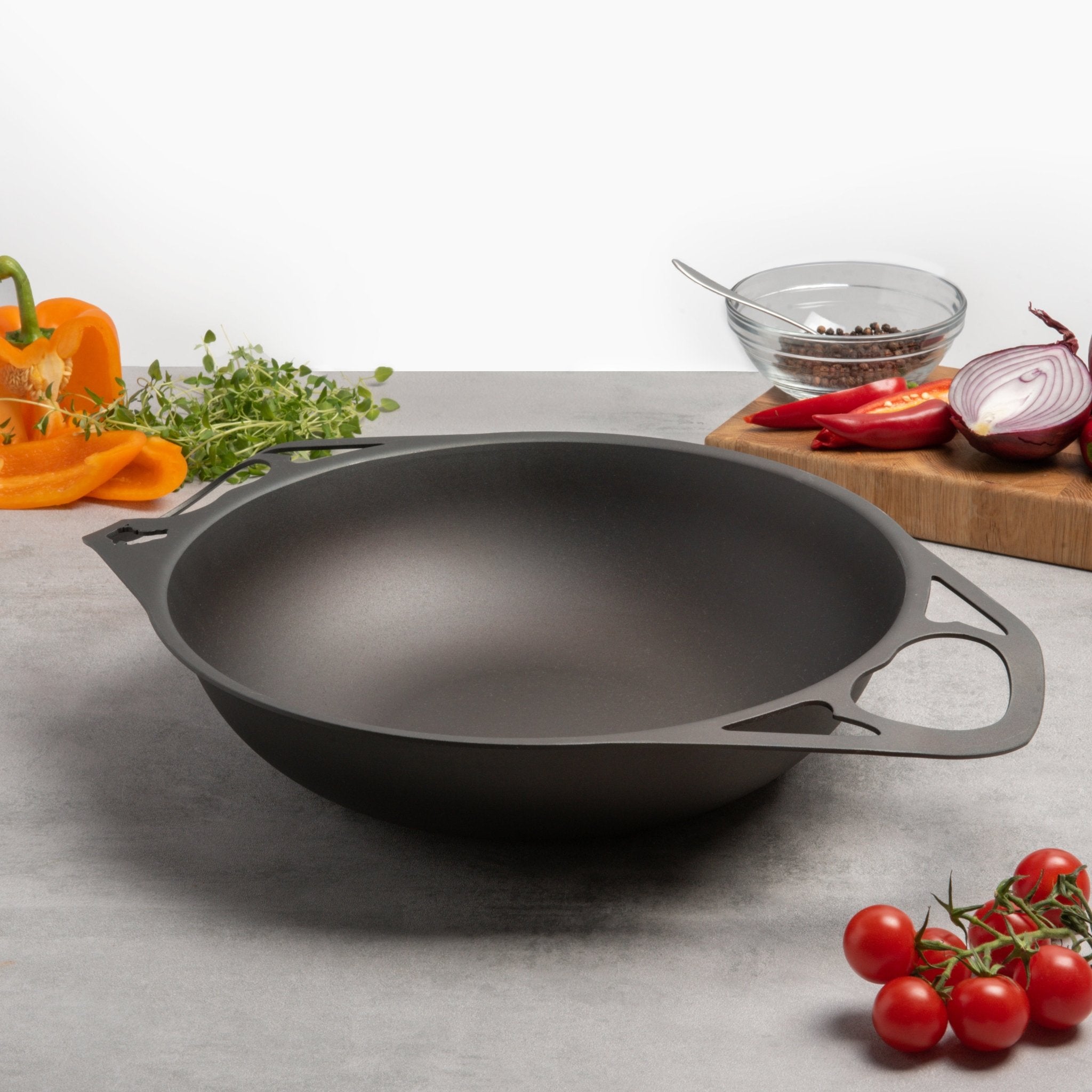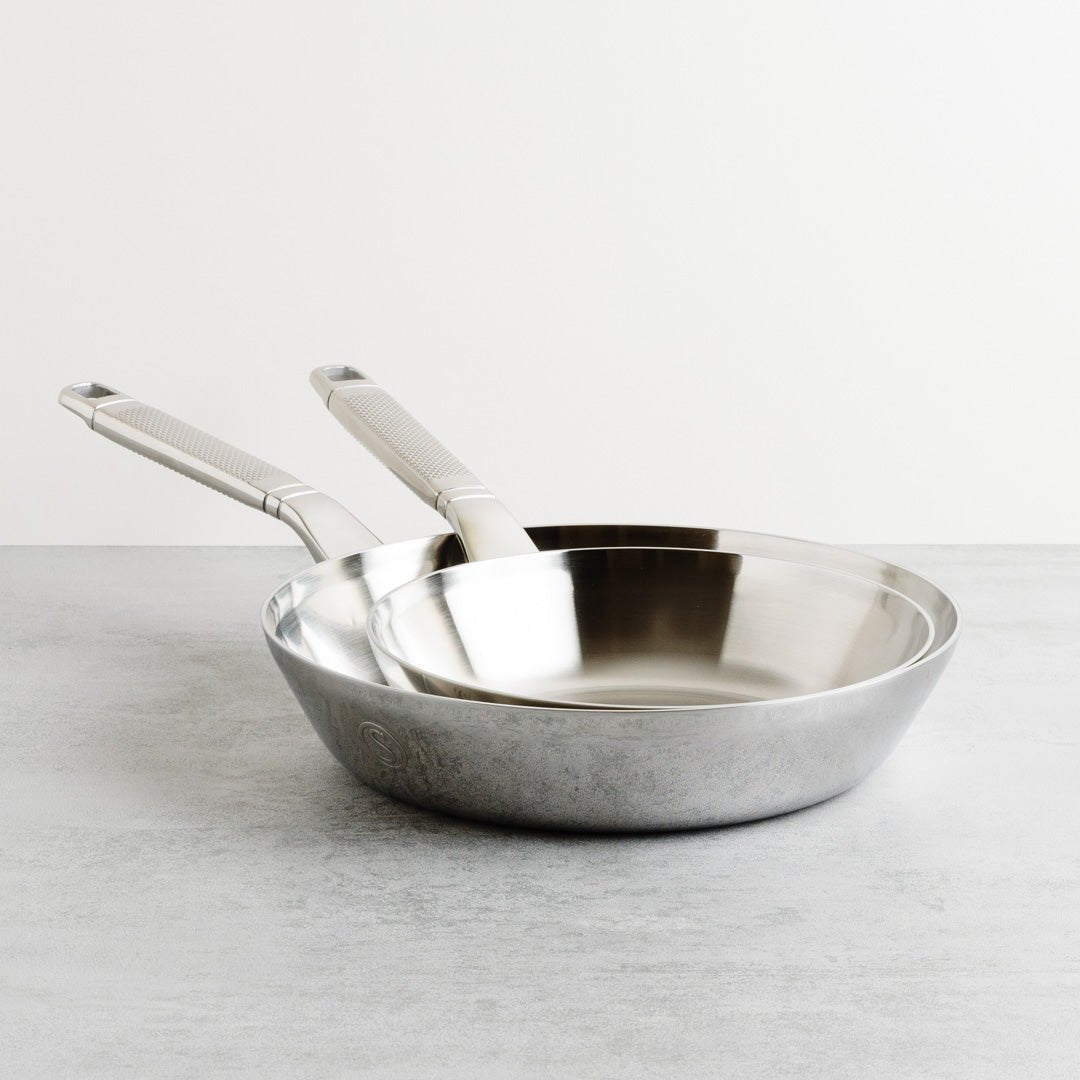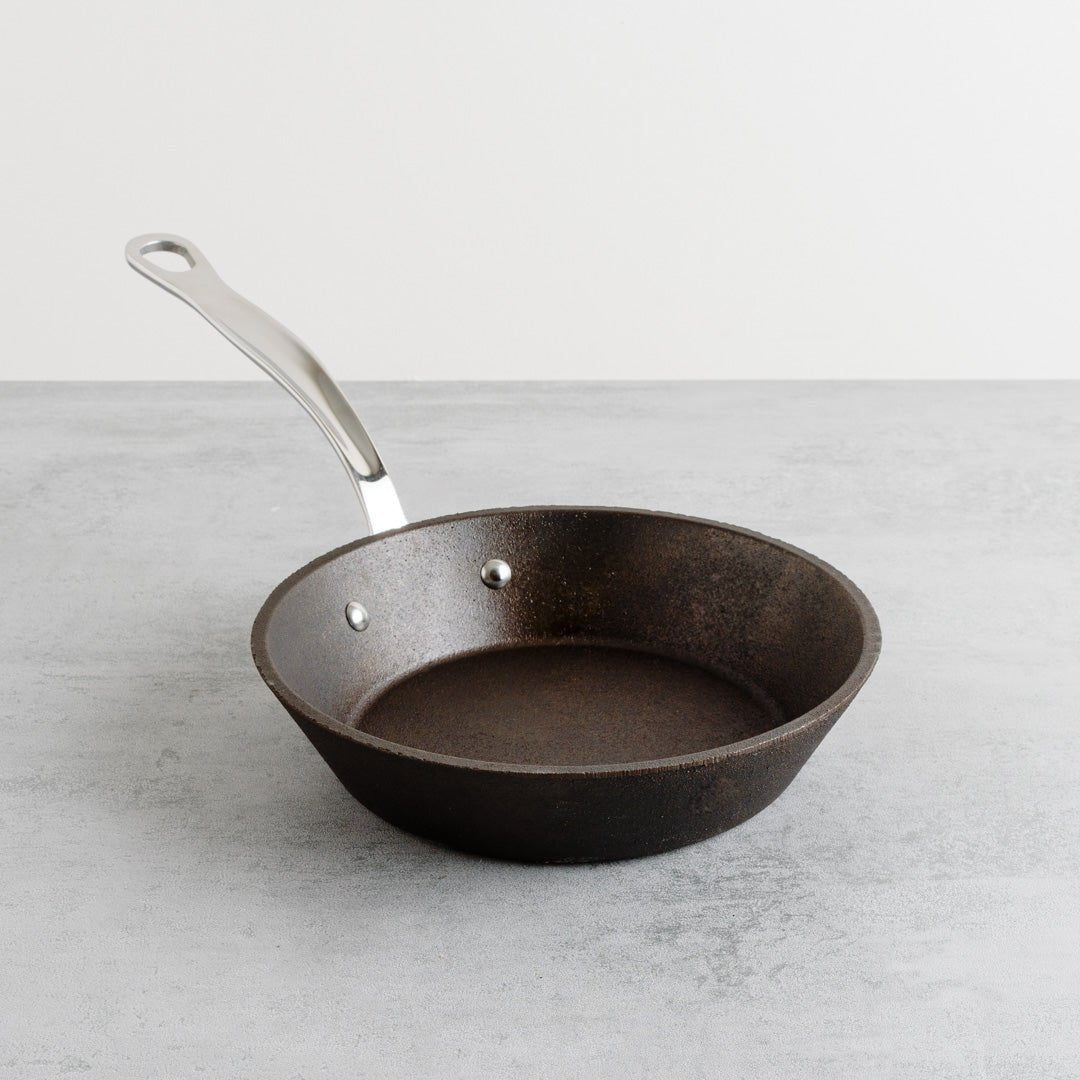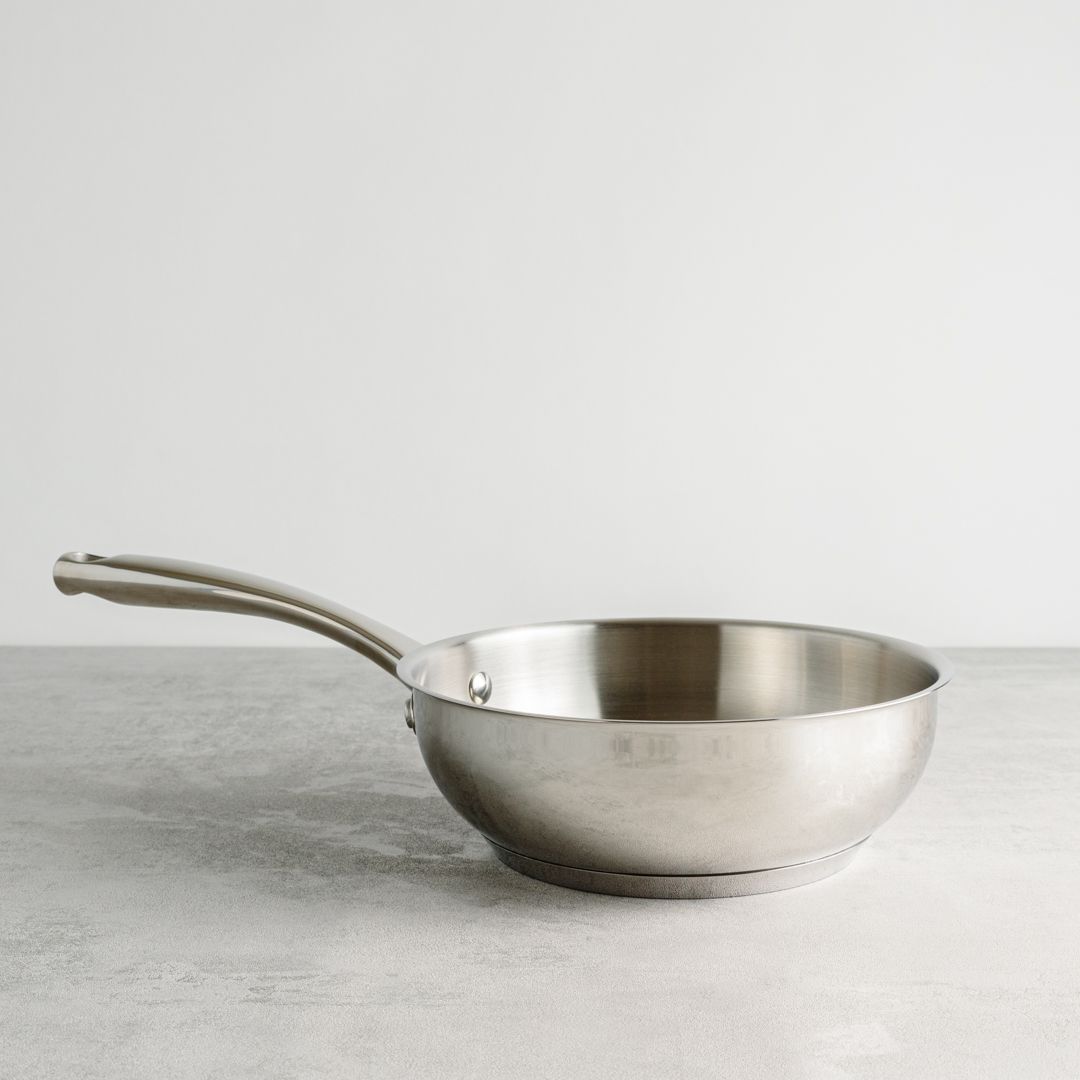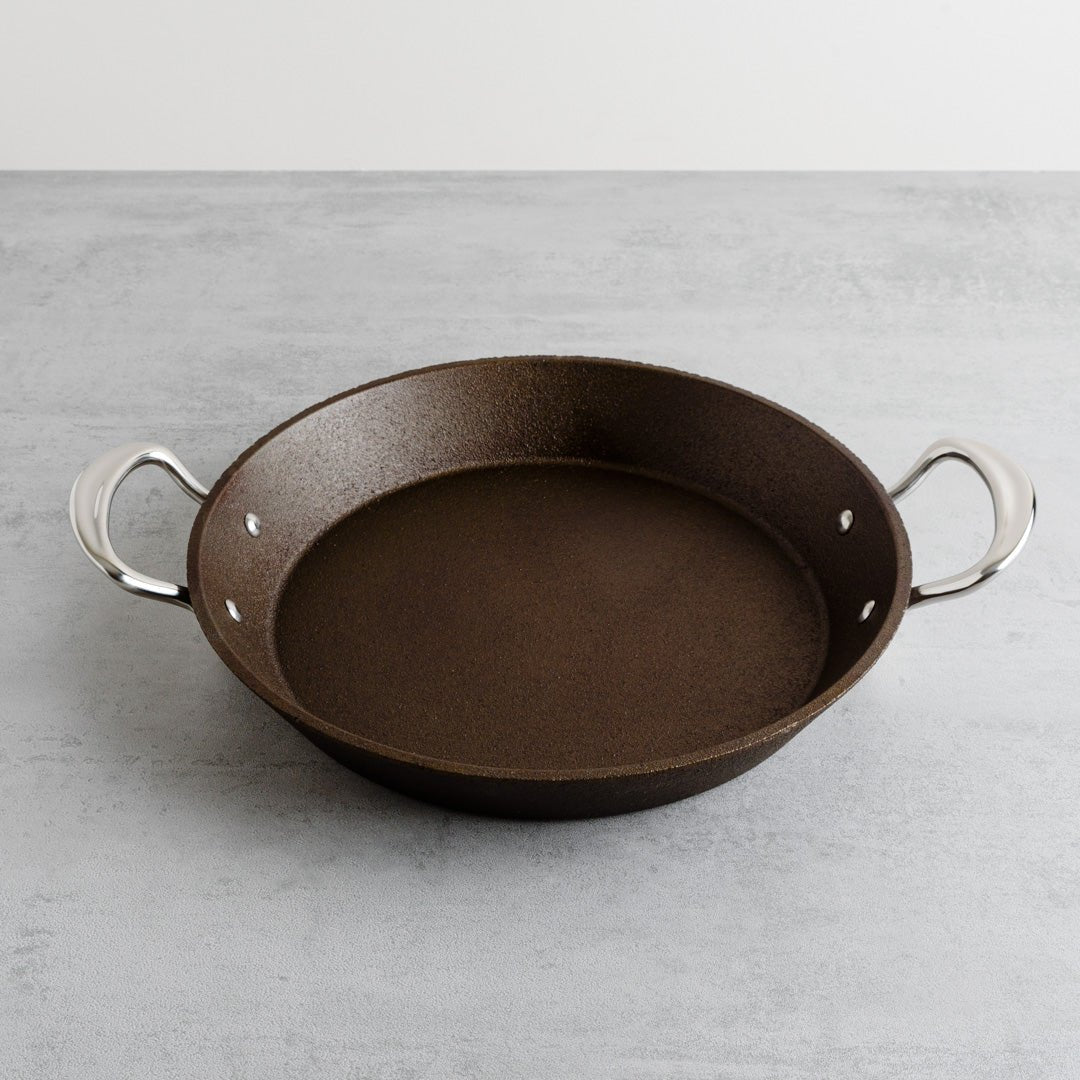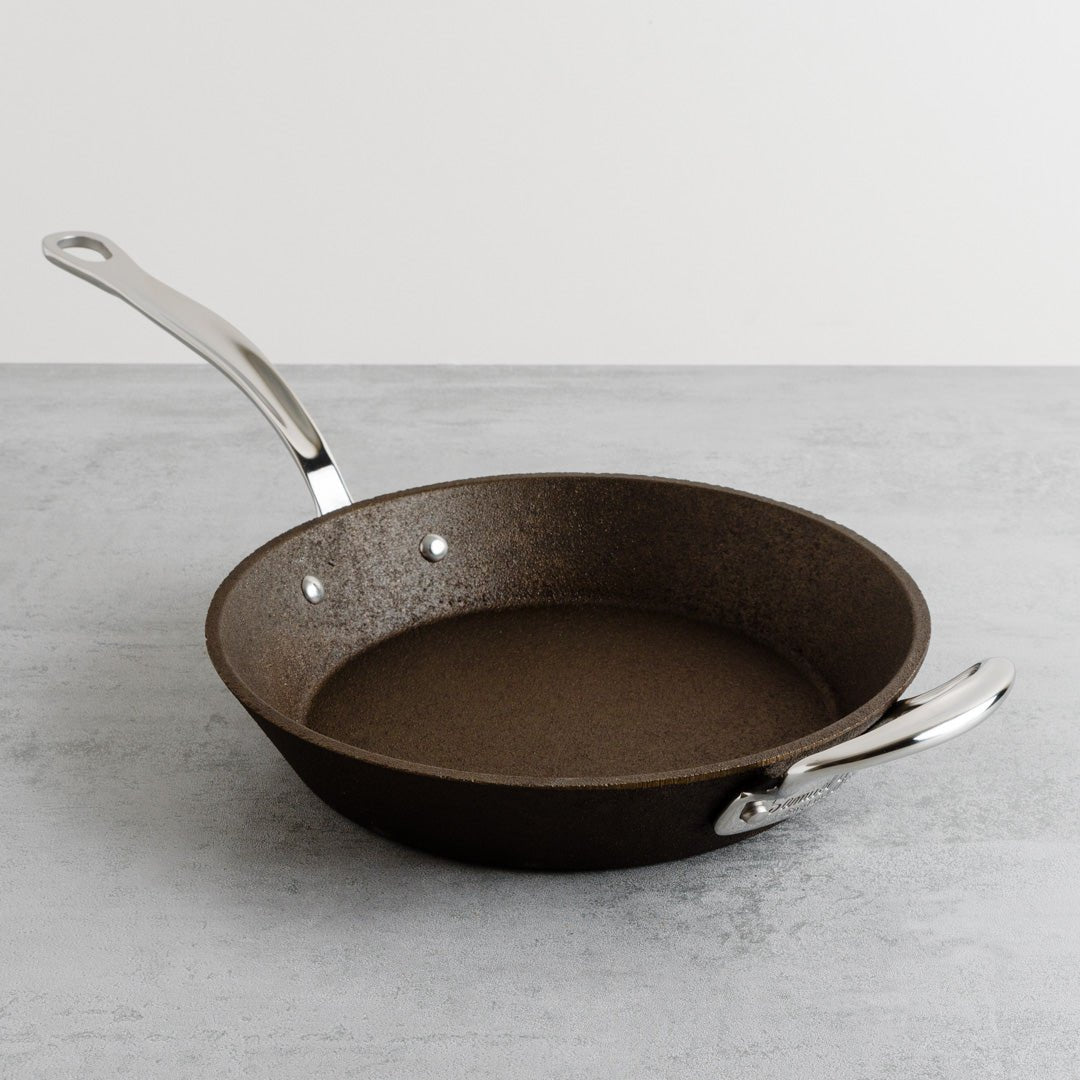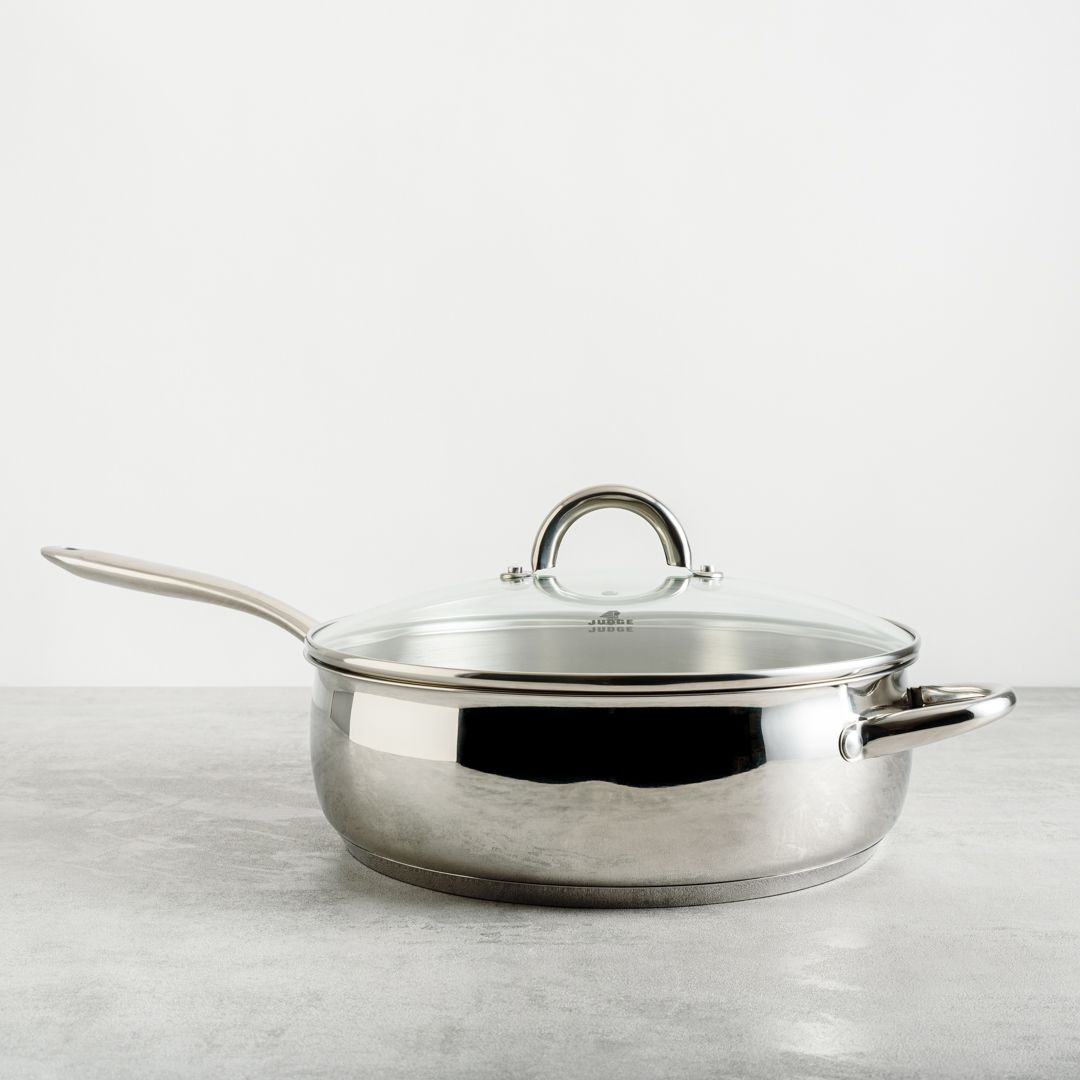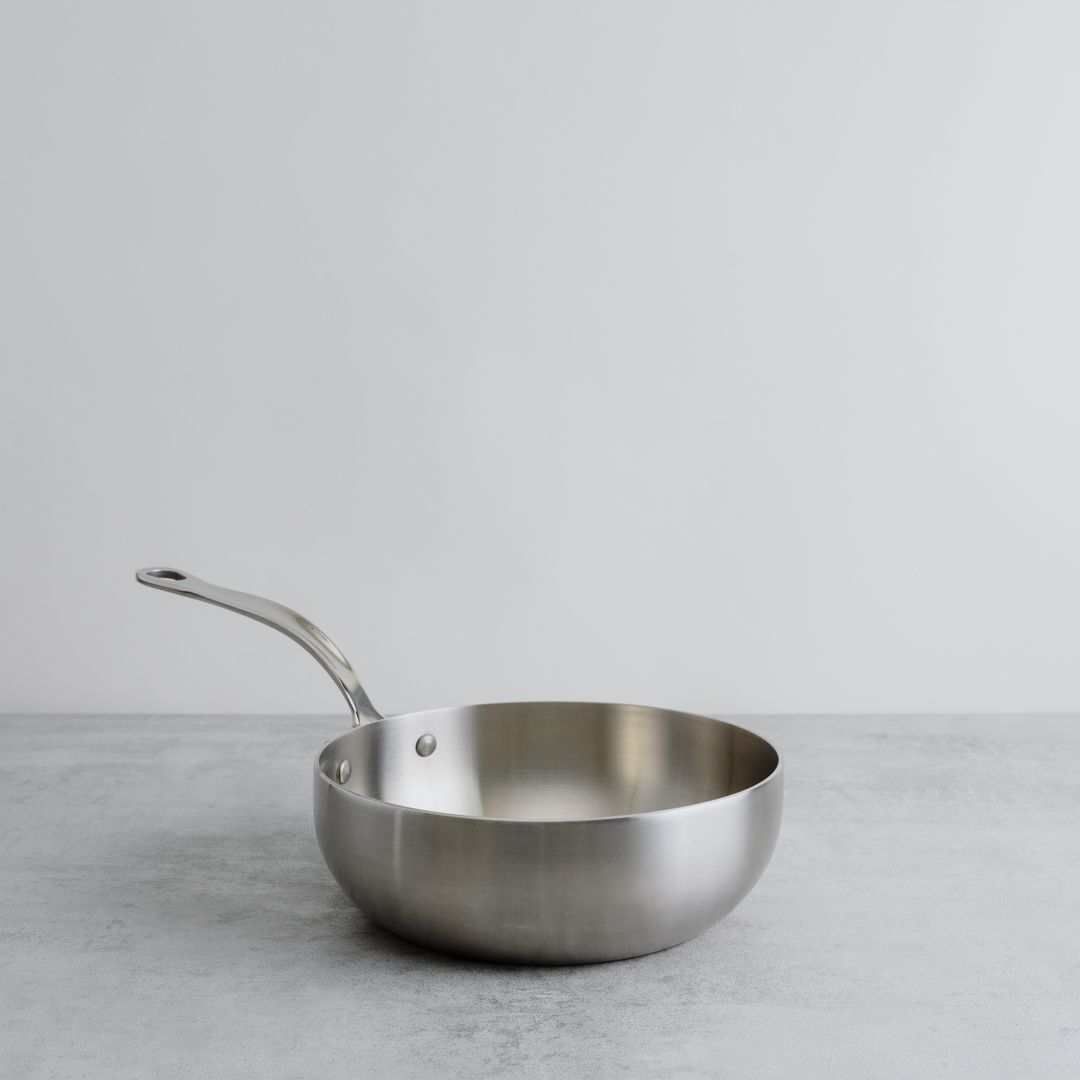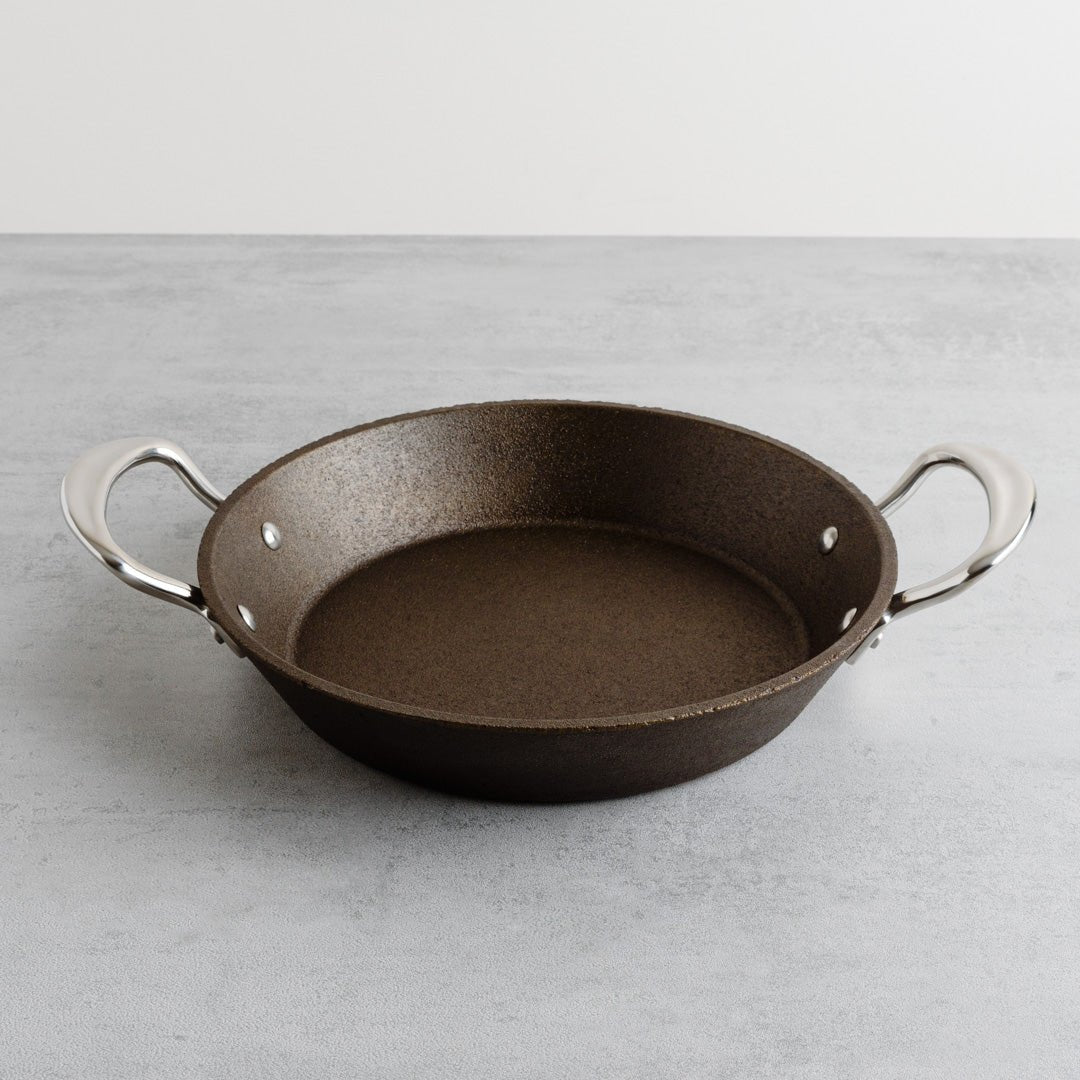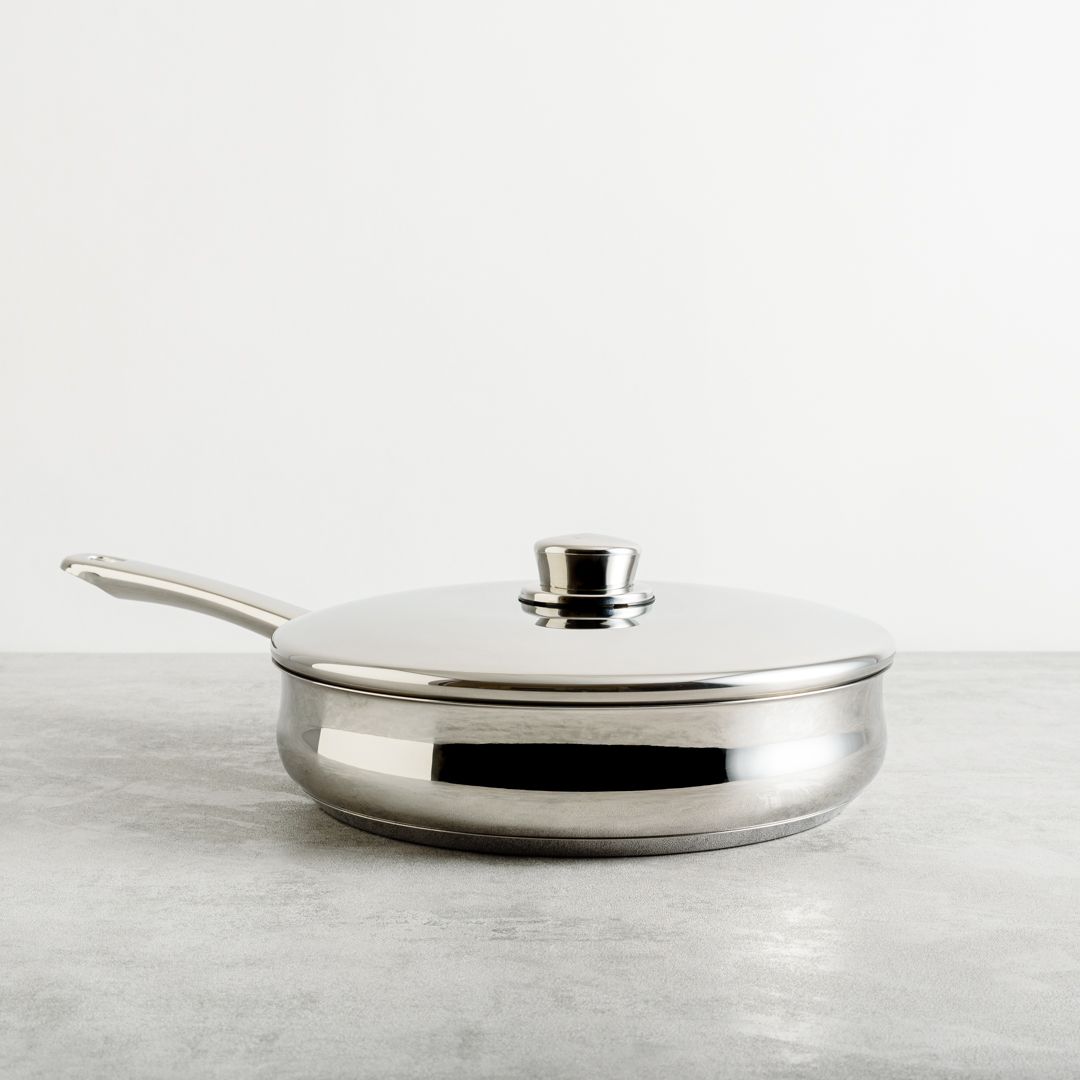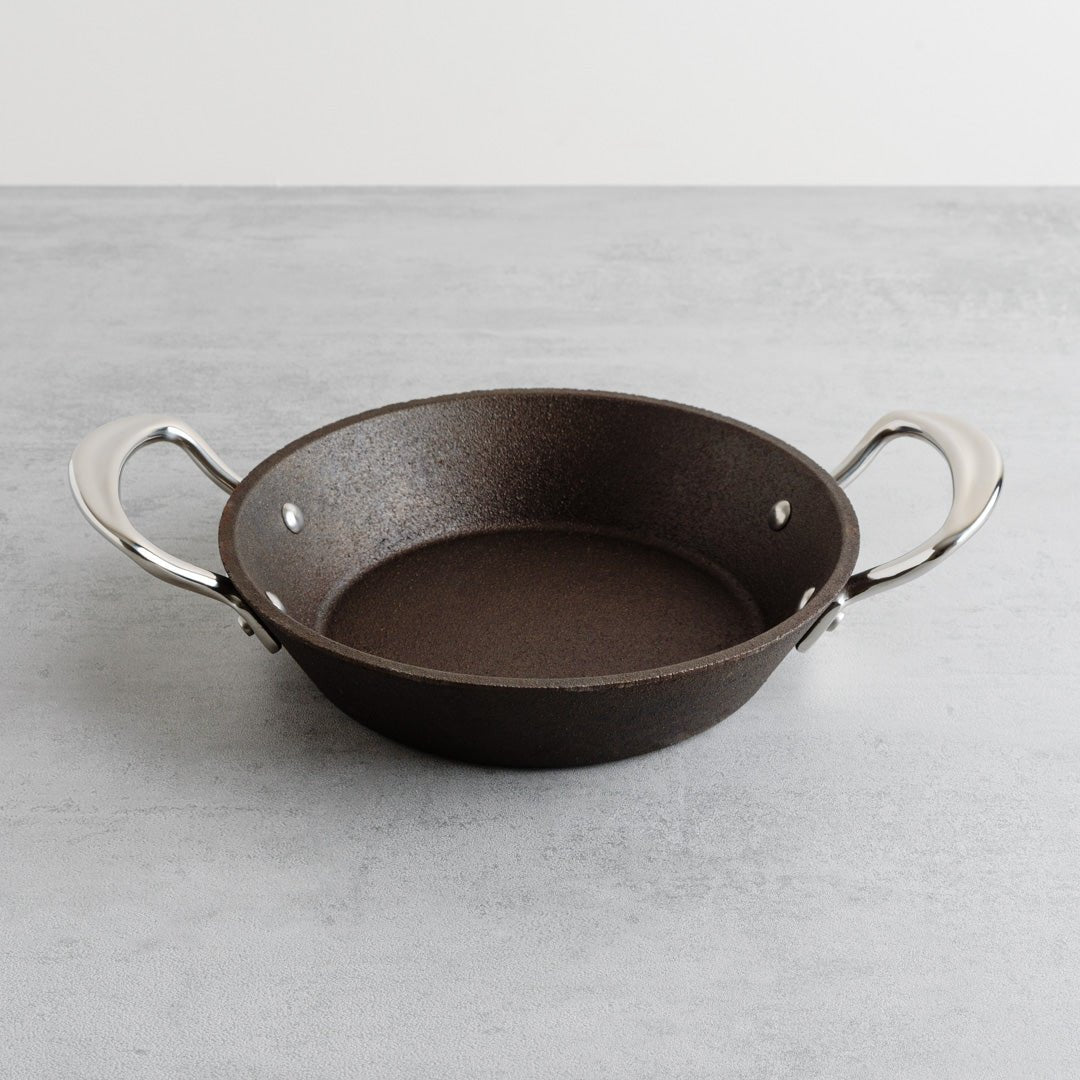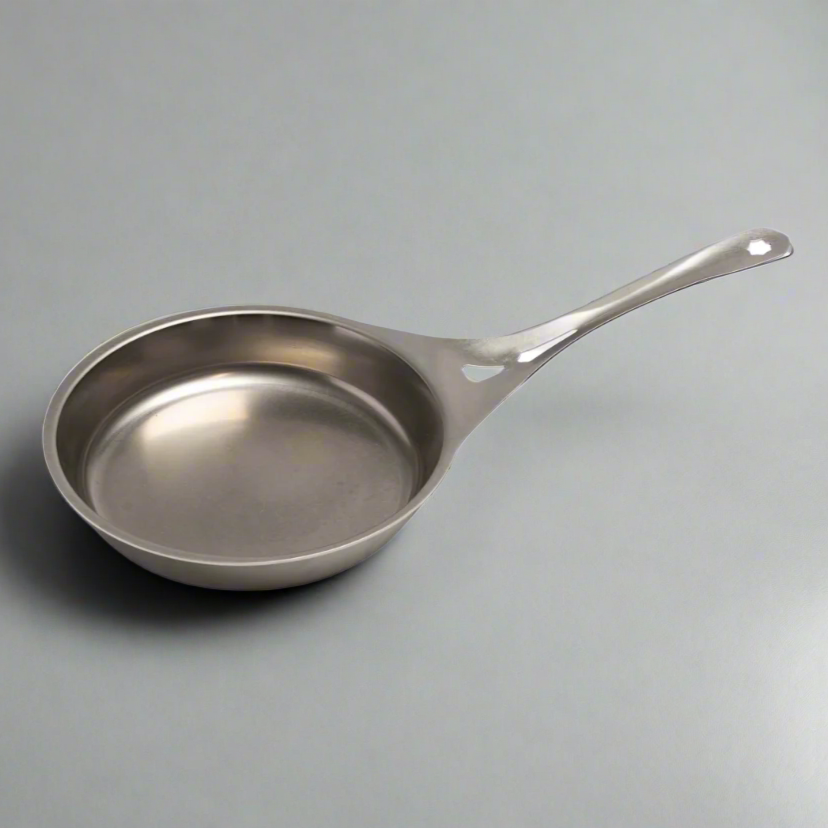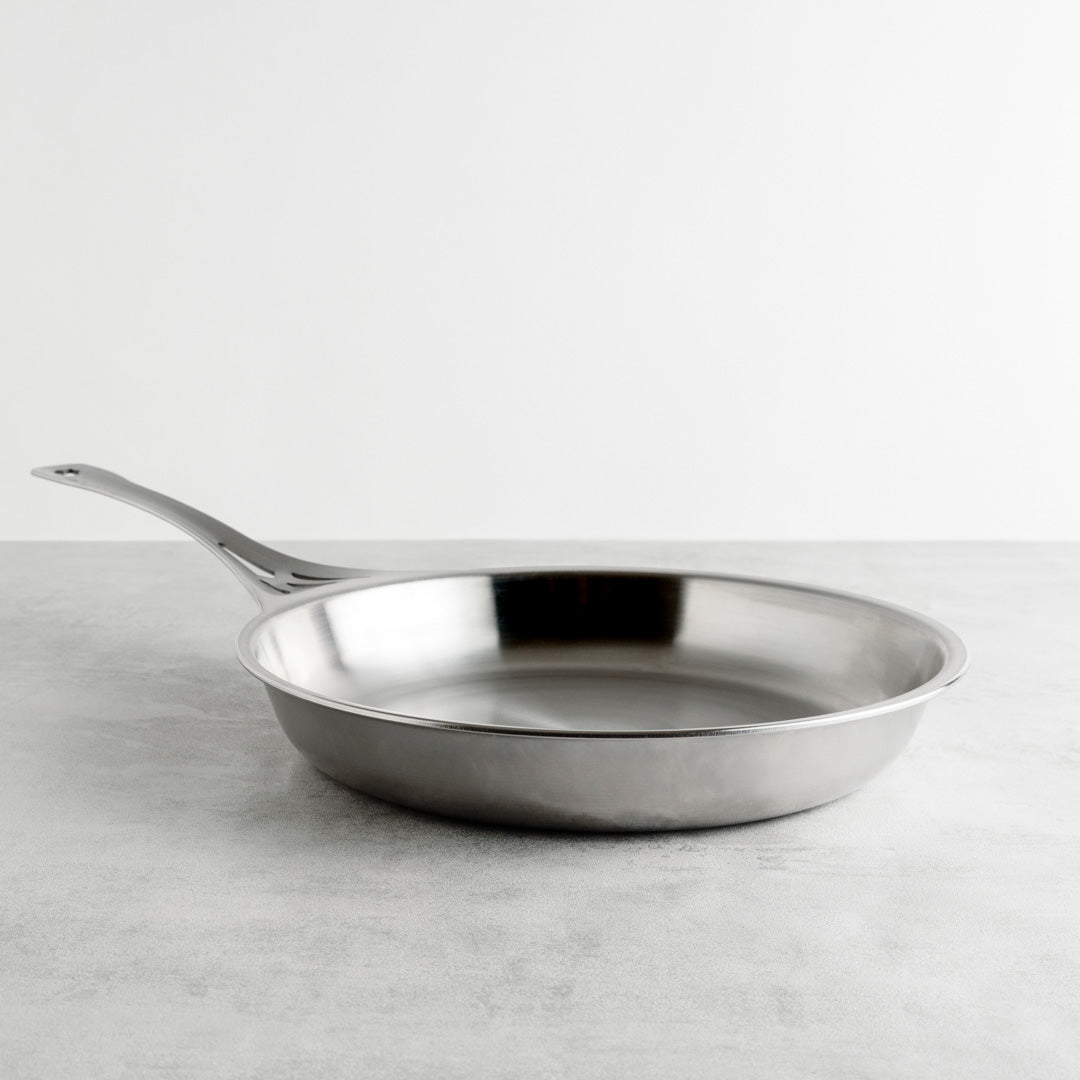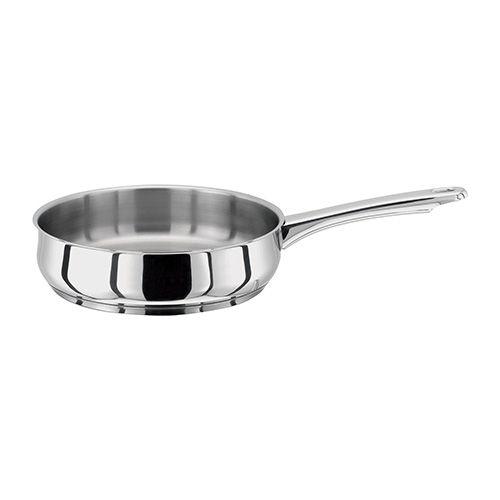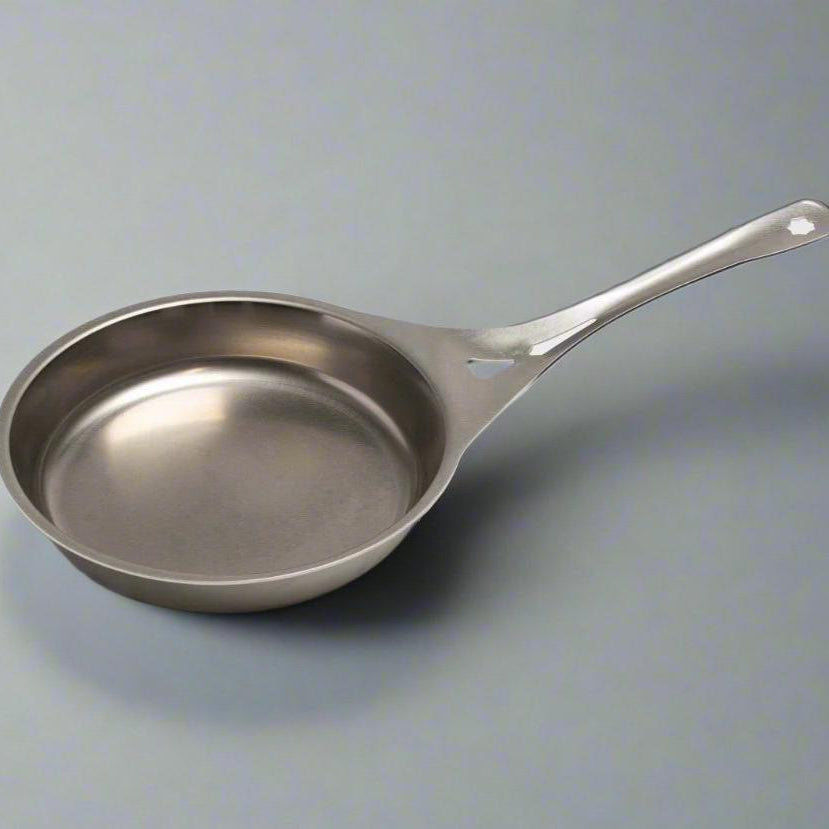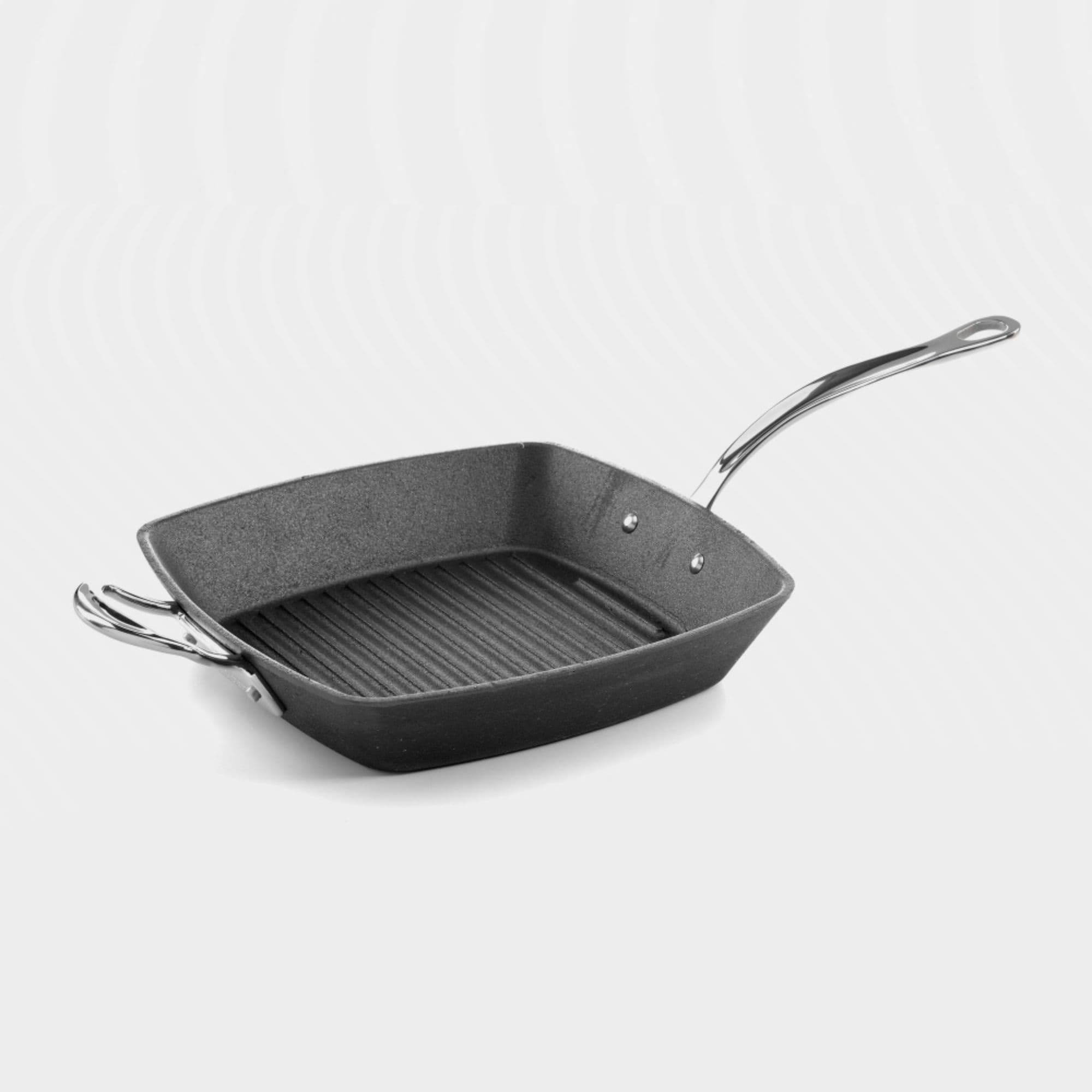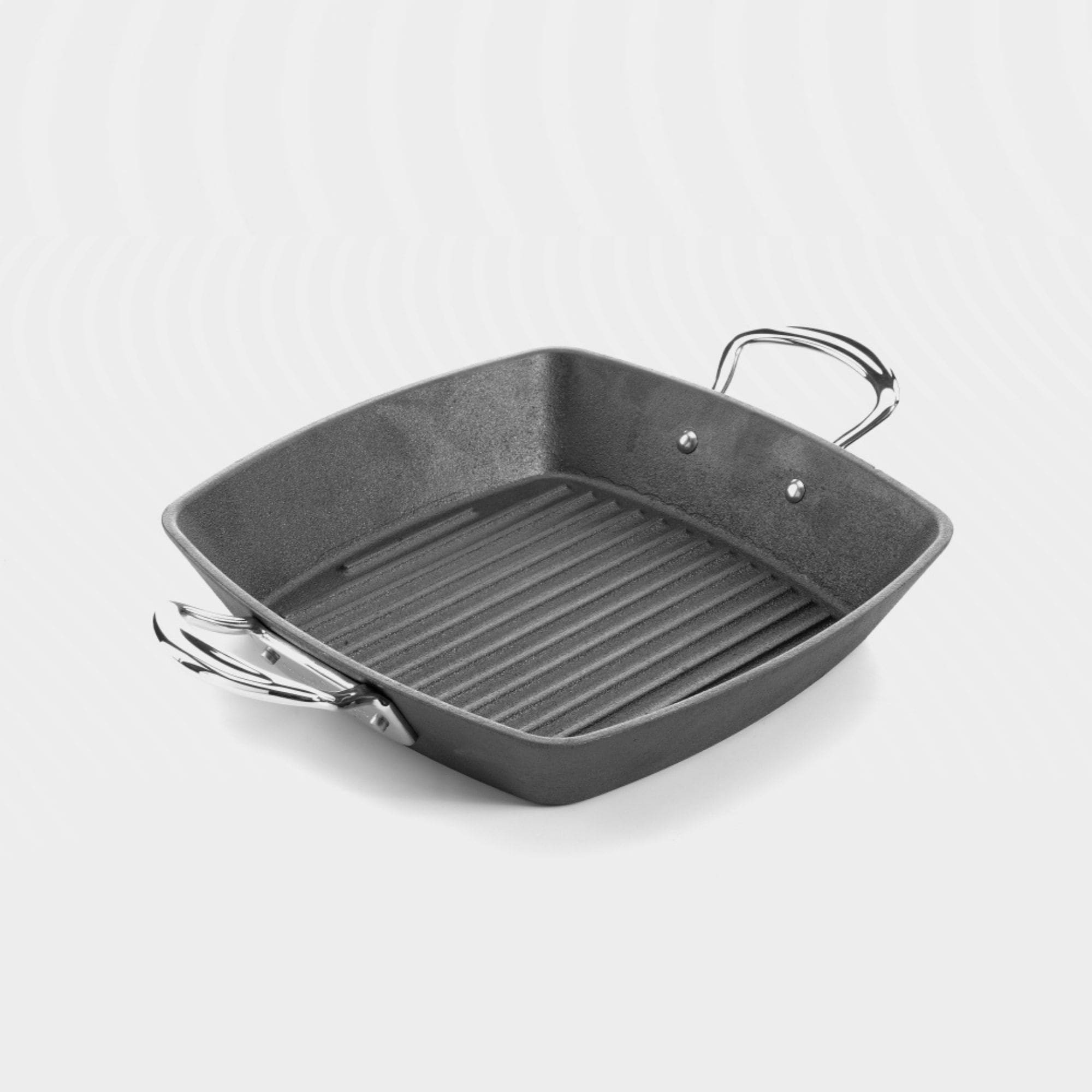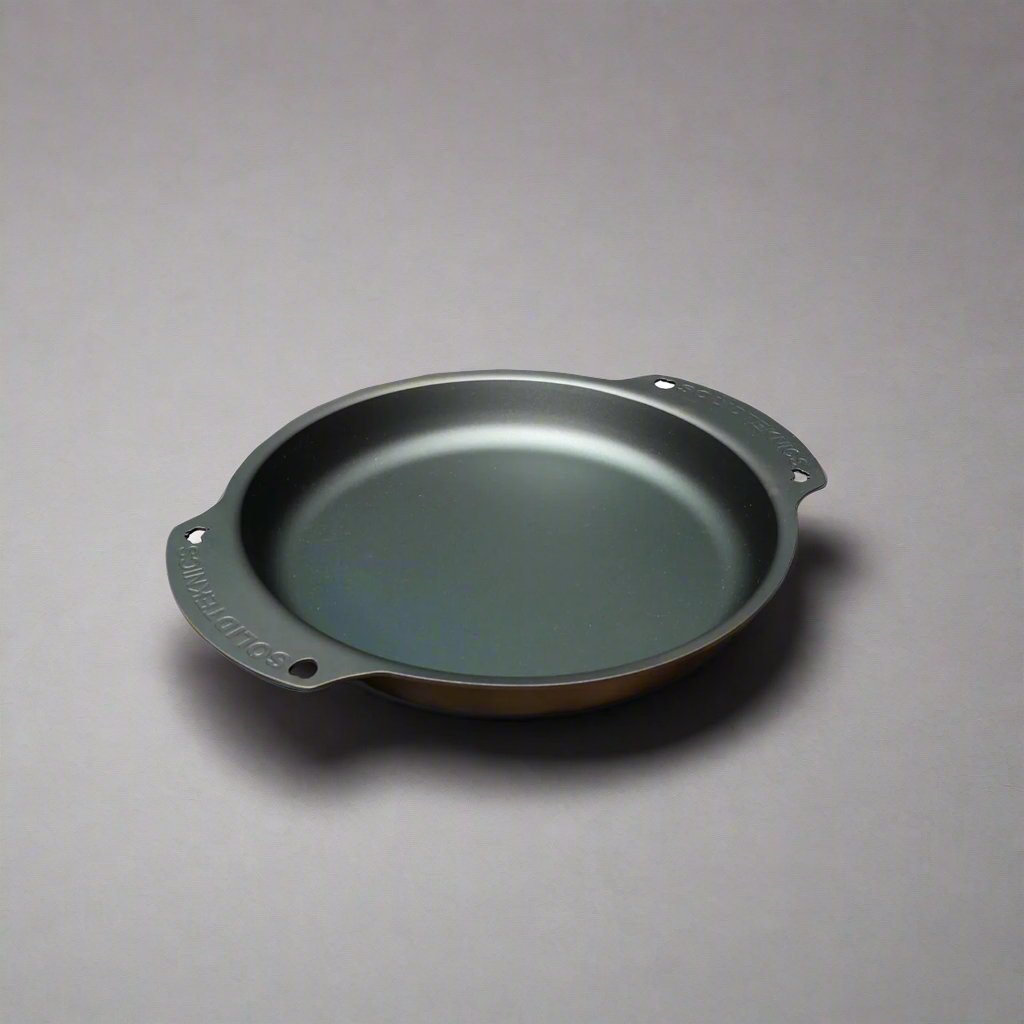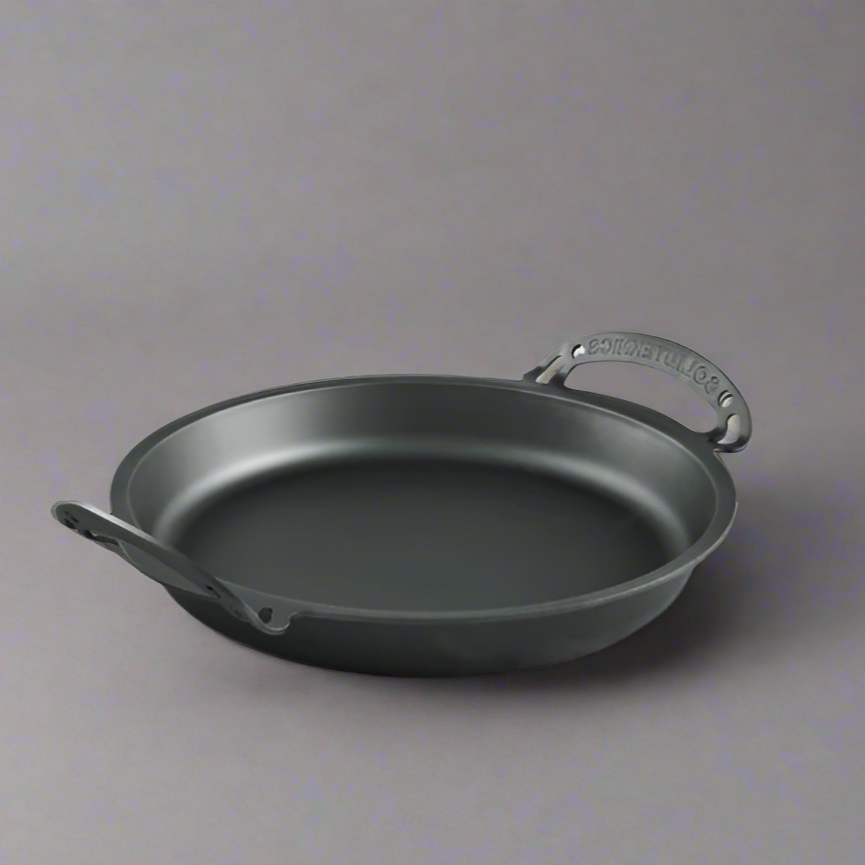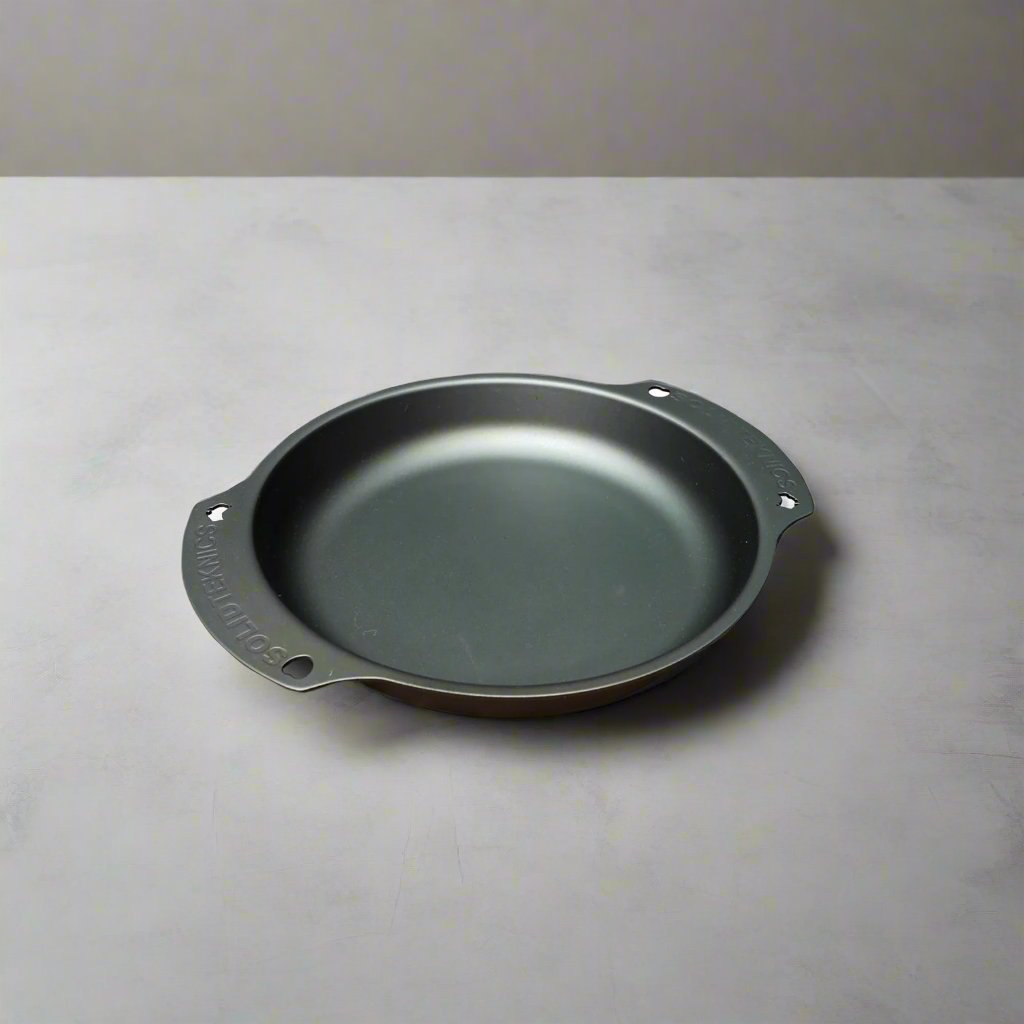Frying Pans
Frying pans that keep going, year after year. No wobbling handles. No flaky coatings. Just solid, dependable pans made from proper materials like cast iron, carbon steel and stainless steel. They heat evenly, cook beautifully and hold up to real, everyday use. A good frying pan should earn its place on the hob – not end up in landfill. Worth choosing once, then not thinking about again.
Frying Pans FAQs
What are the longest-lasting frying pans available?
The longest-lasting frying pans are made from cast iron, carbon steel or stainless steel. These durable materials stand up to high heat and daily use without warping. Cast iron and carbon steel even get better with age, thanks to seasoning. Stainless steel pans are low-fuss and naturally rust-resistant. Look for models with repairable parts or lifetime warranties - some brands offer 25 years or more. In short, a solid pan should outlast most of your socks. See our cookware collection or learn how we find the most durable products.
How do I properly clean a burnt or stained frying pan?
To clean a burnt or stained frying pan, soak it in warm water to loosen debris. For stainless steel, use baking soda paste and a soft cloth - skip the wire wool. Cast iron or carbon steel? No soaking. Scrub with salt and a dash of oil, then wipe clean. Avoid harsh abrasives on any pan, as they can strip protective coatings. With the right approach, even a scorched pan can get its shine back. Browse our full care and repair hub for deeper cleaning tips.
Can I use my frying pan in the oven safely?
Yes, you can use many frying pans in the oven safely, including cast iron, carbon steel and full-metal stainless steel. Just avoid pans with plastic or rubber handles, unless the maker says otherwise. Most quality pans are oven-safe up to 260°C or beyond. It’s always wise to check the label before roasting your Sunday fry-up. Oven-friendly pans also mean one less pot to wash - more tea time, less faff. Learn more in our oven-use frying pan guide.
How do I season and care for a cast iron frying pan?
To season a cast iron frying pan, rub it with a thin layer of oil, then bake upside down at 200°C for an hour. This builds a natural non-stick layer over time. After each use: rinse, scrub gently if needed, dry thoroughly and re-oil if looking dull. Never let it sit wet or soak in water - that’s a shortcut to rust. With regular care, your pan could still be sizzling sausages when you've gone grey. Read our full cast iron seasoning guide.
Which frying pans are safest for avoiding harmful chemicals?
The safest frying pans for avoiding harmful chemicals are uncoated cast iron, carbon steel and stainless steel. These non-toxic materials are naturally free from PFAS and other nasties. Ceramic-coated options can also be safe, especially from manufacturers with clear safety testing. Seek pans that list all materials clearly and come from brands that don’t play fast and loose with health standards. Peace of mind tastes just as good as a crispy egg.
What type of frying pan gives the best sear on steak?
For the best sear on steak, pick a heavy cast iron or carbon steel frying pan. They hold heat like a champ, giving you that golden-brown crust and juicy centre. A well-seasoned surface helps prevent sticking too. Thick stainless steel pans can also do the job, though they need a bit more finesse. Serious steak lovers swear by cast iron - for good reason. It’s like bringing a steakhouse into your kitchen (cowboy hat optional).
Are non-stick frying pans worth it if I want something long-term?
Non-stick frying pans can be handy, but they rarely go the distance. Most coatings wear out after 3–5 years, especially with high heat or metal utensils. If you want a long-term solution, try seasoned cast iron or carbon steel - they develop a natural non-stick layer with use. Some newer ceramic pans last longer too, but check for at least a 5–10 year warranty. For safer, longer-lasting options, explore our non-toxic cookware alternatives.

